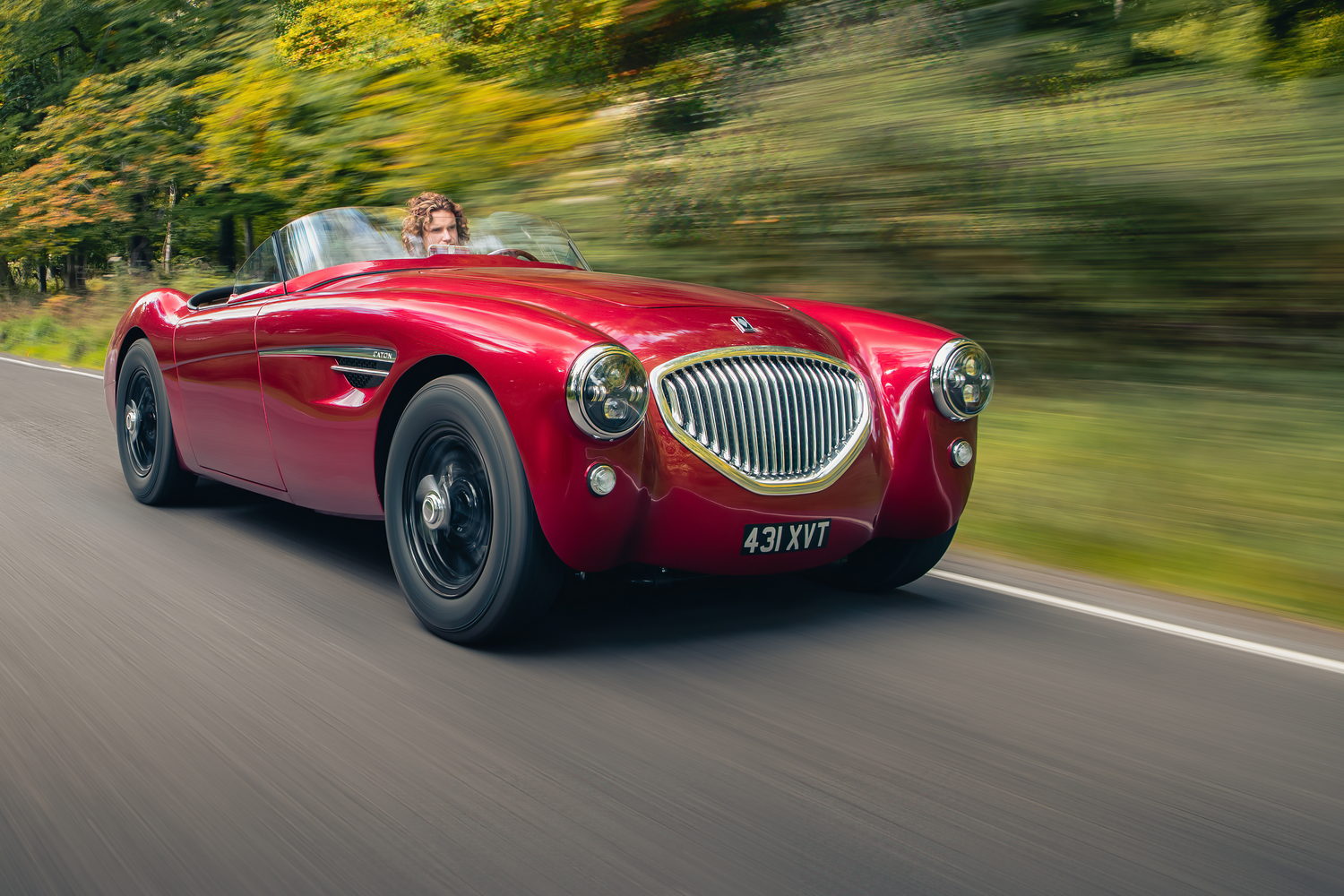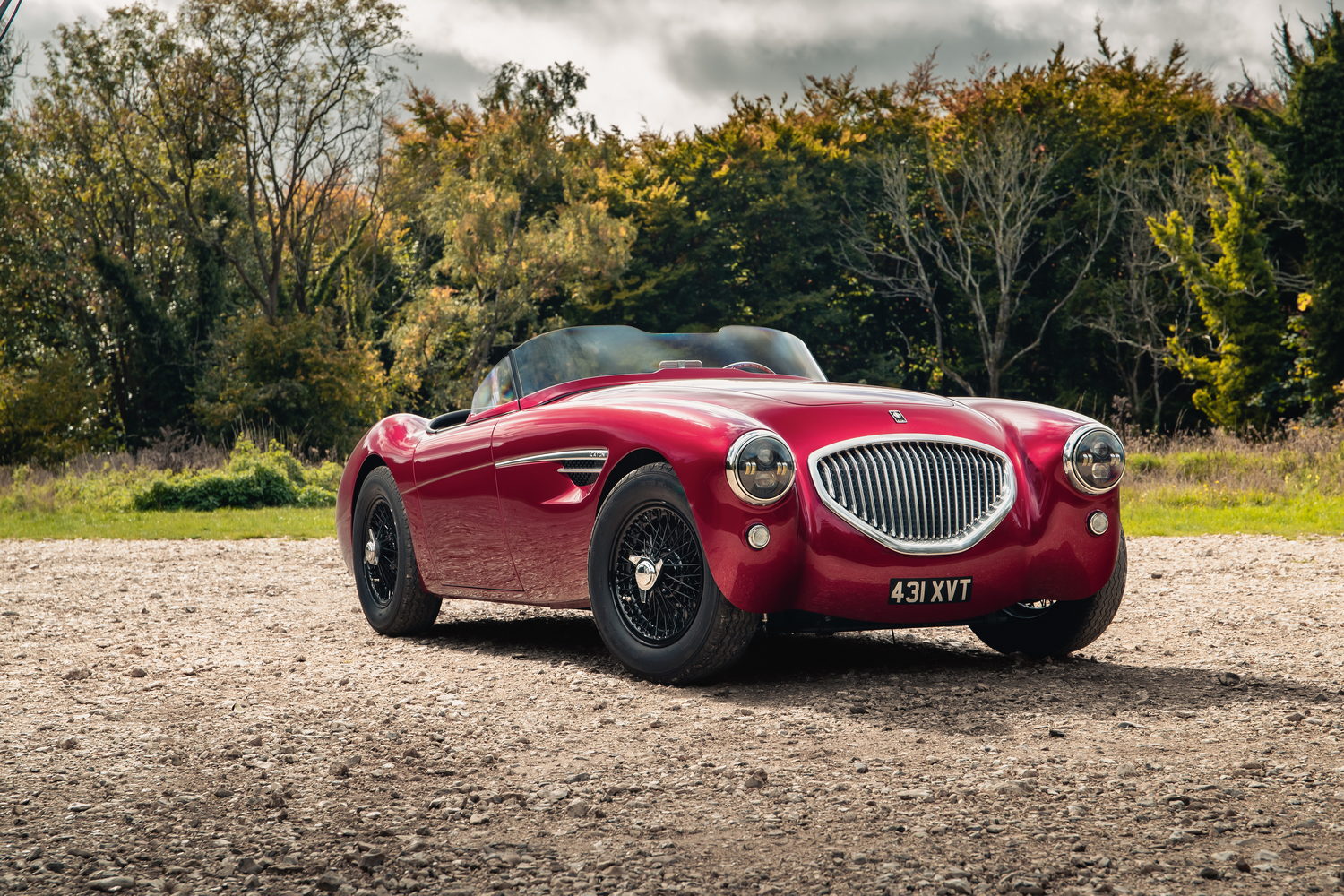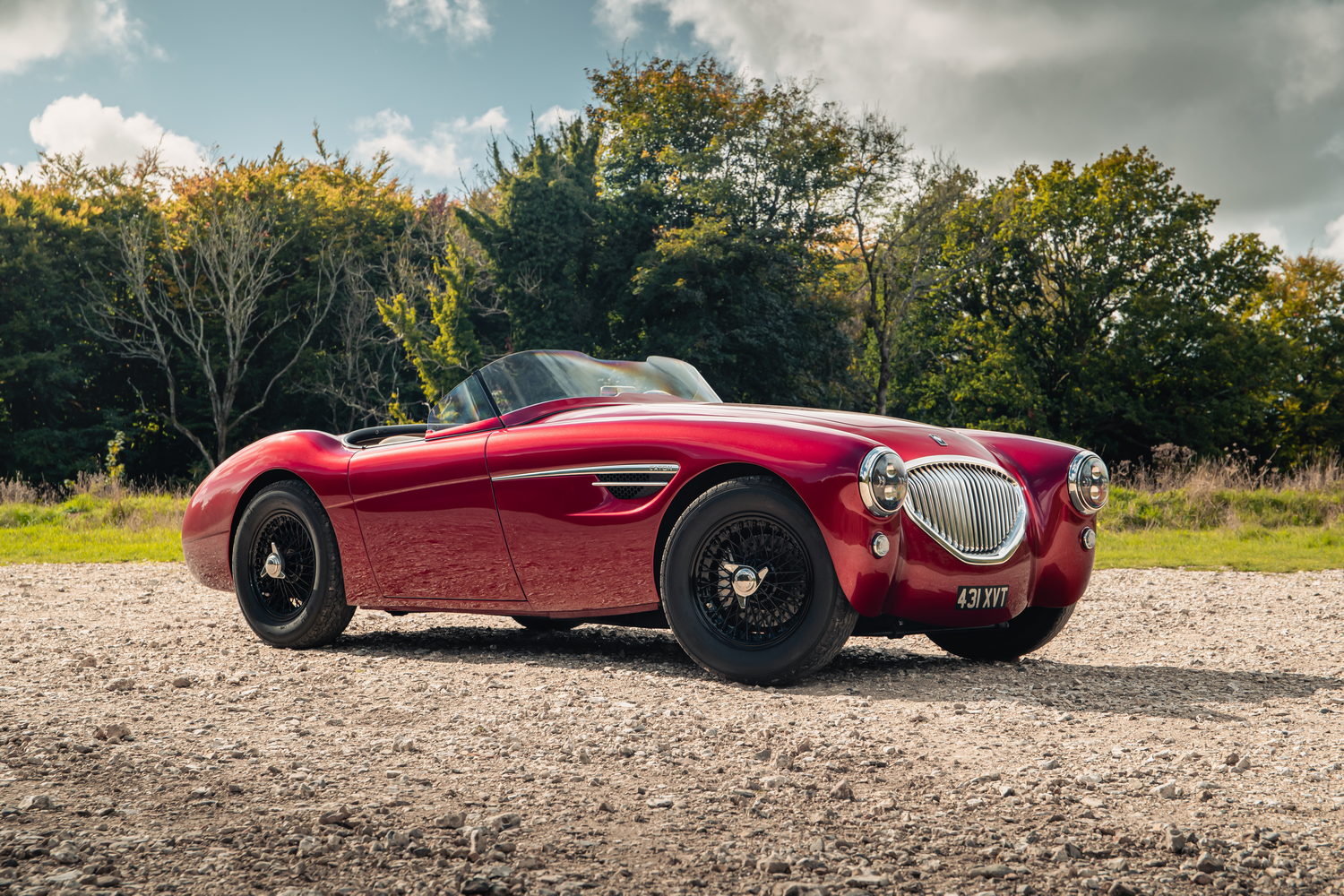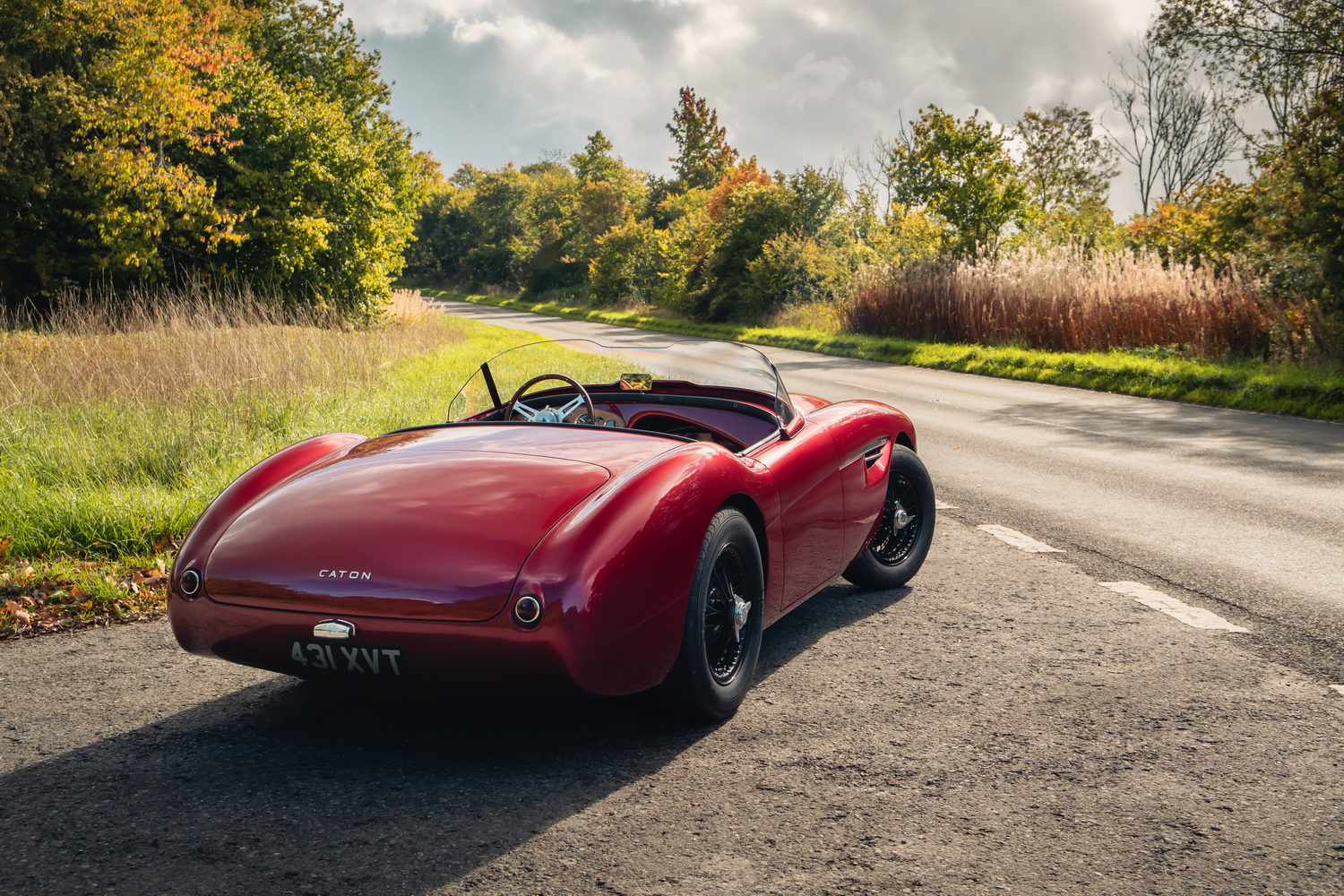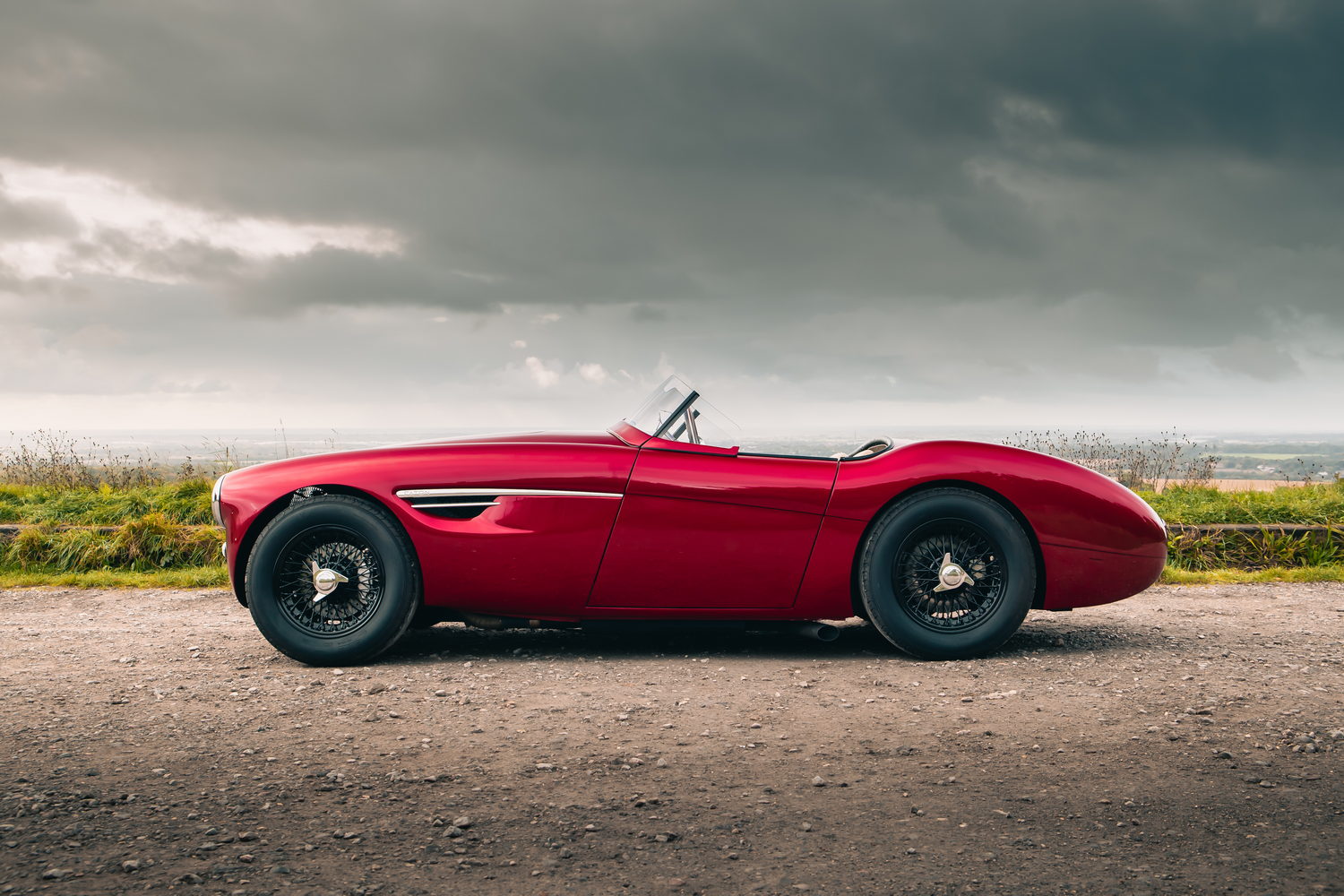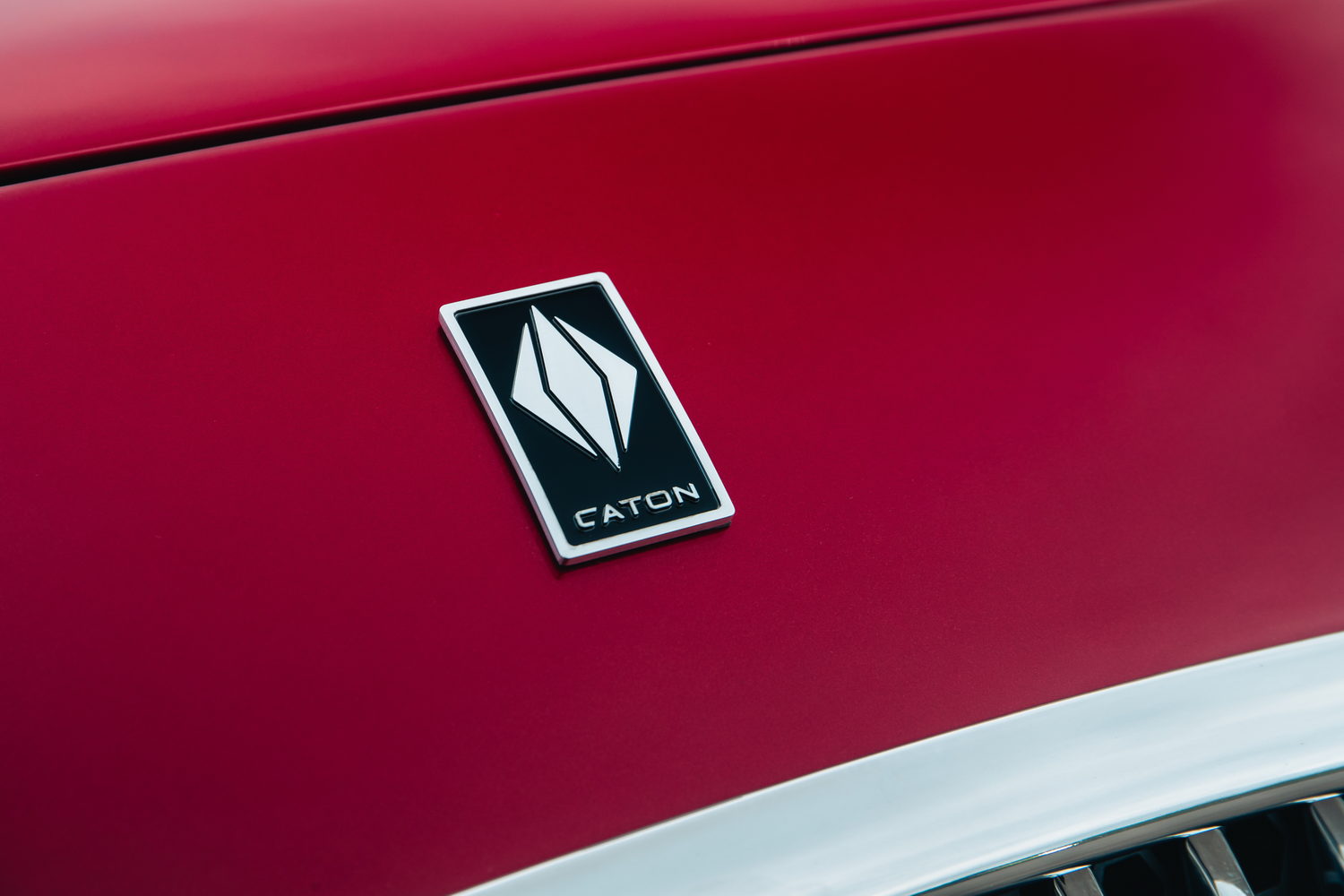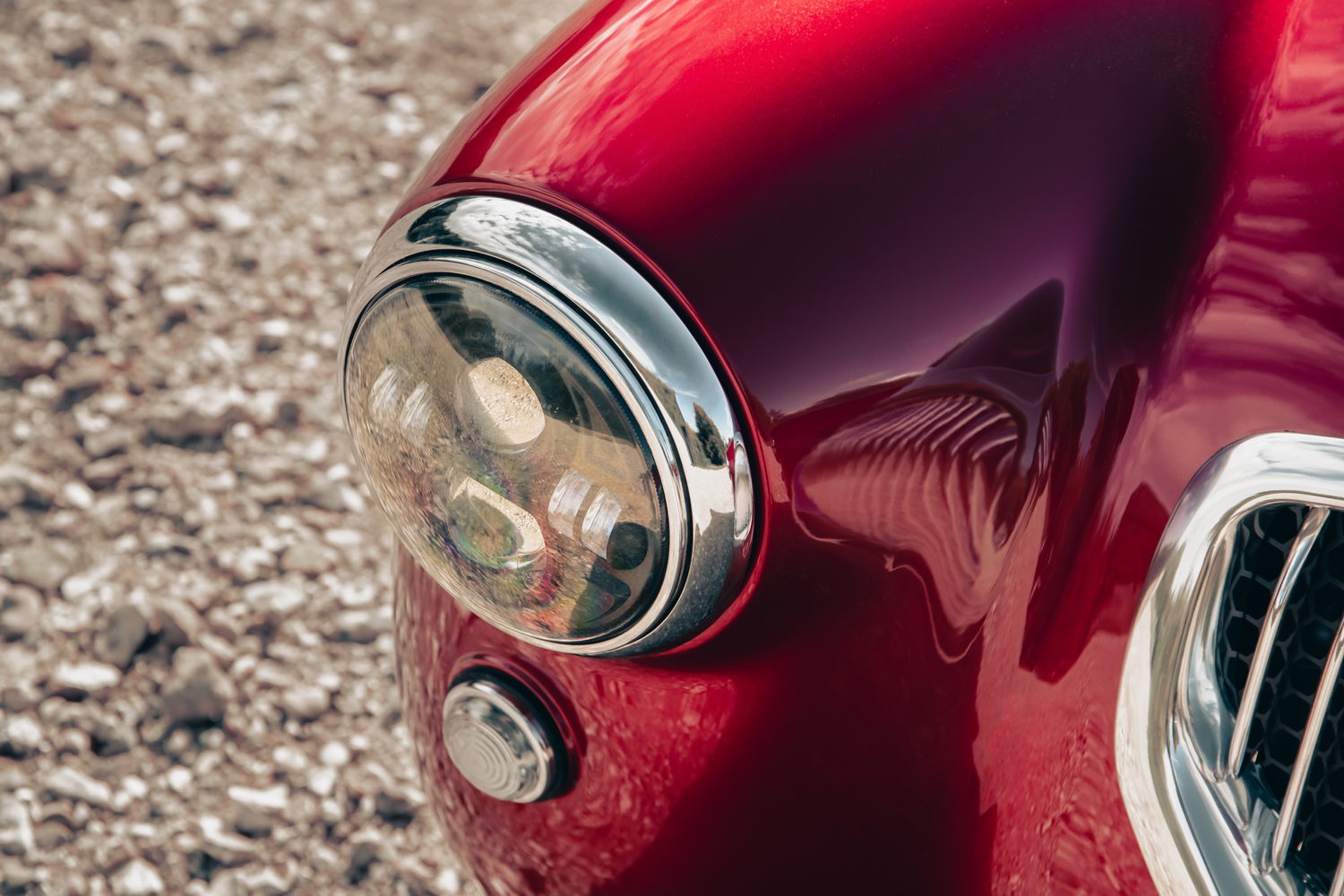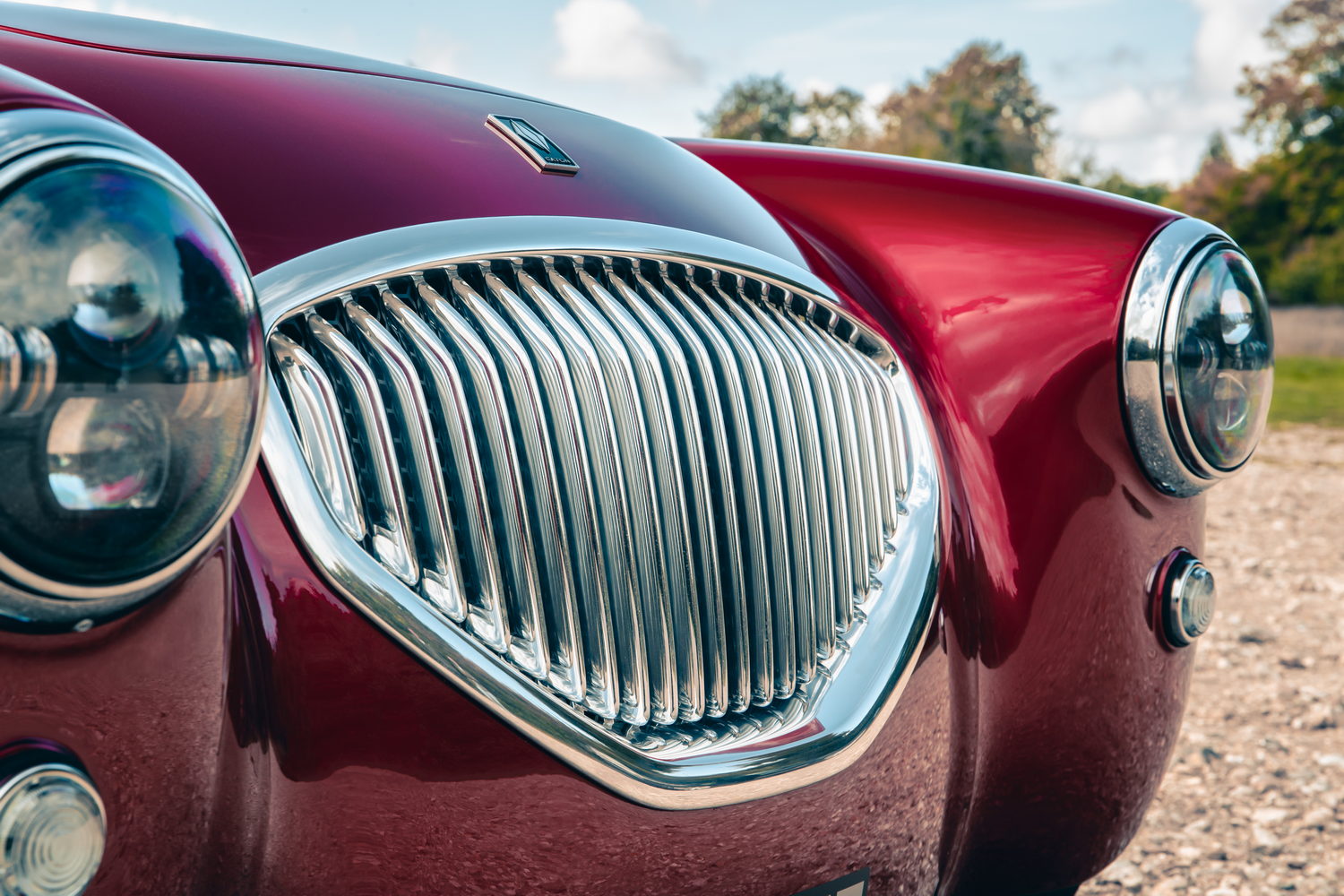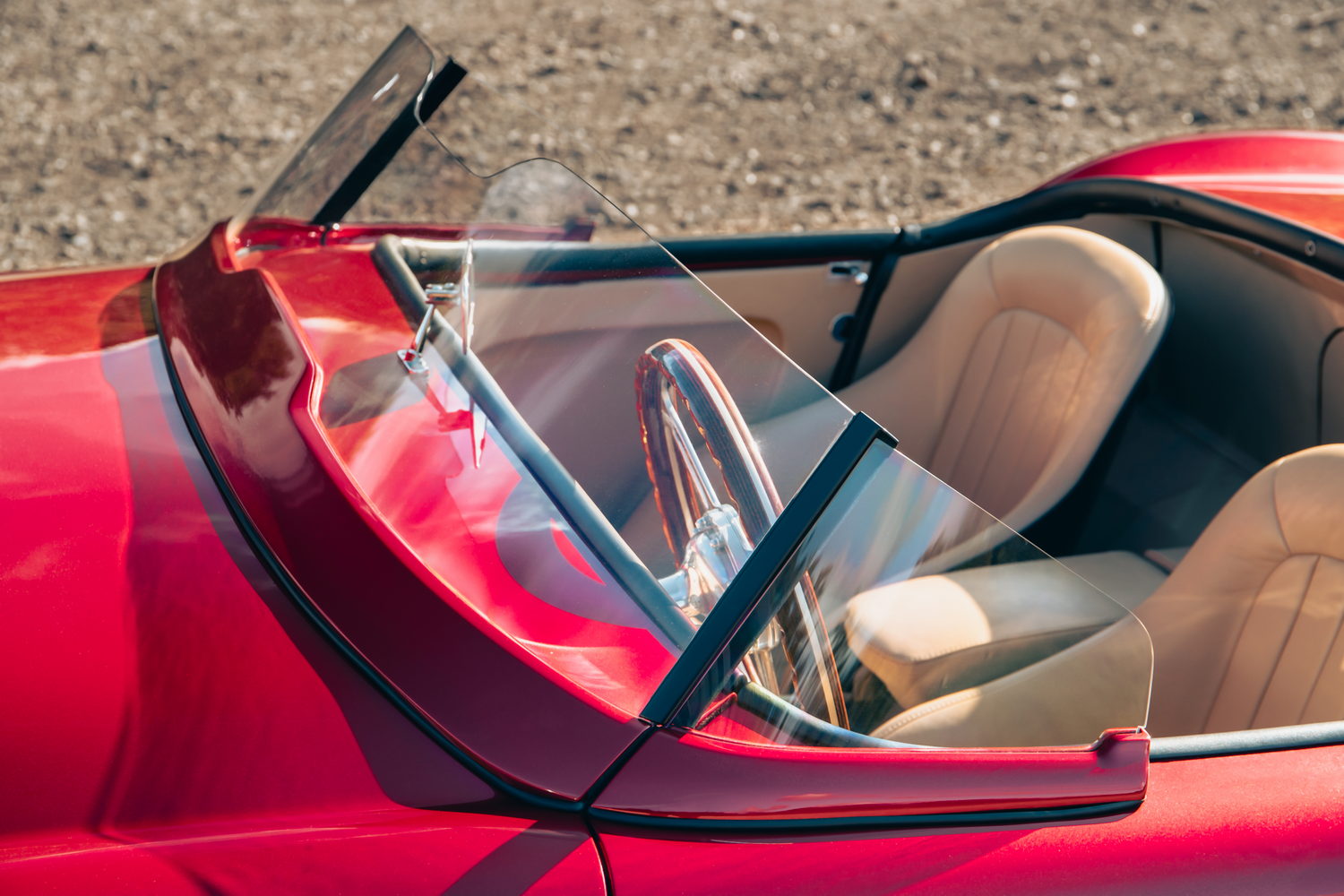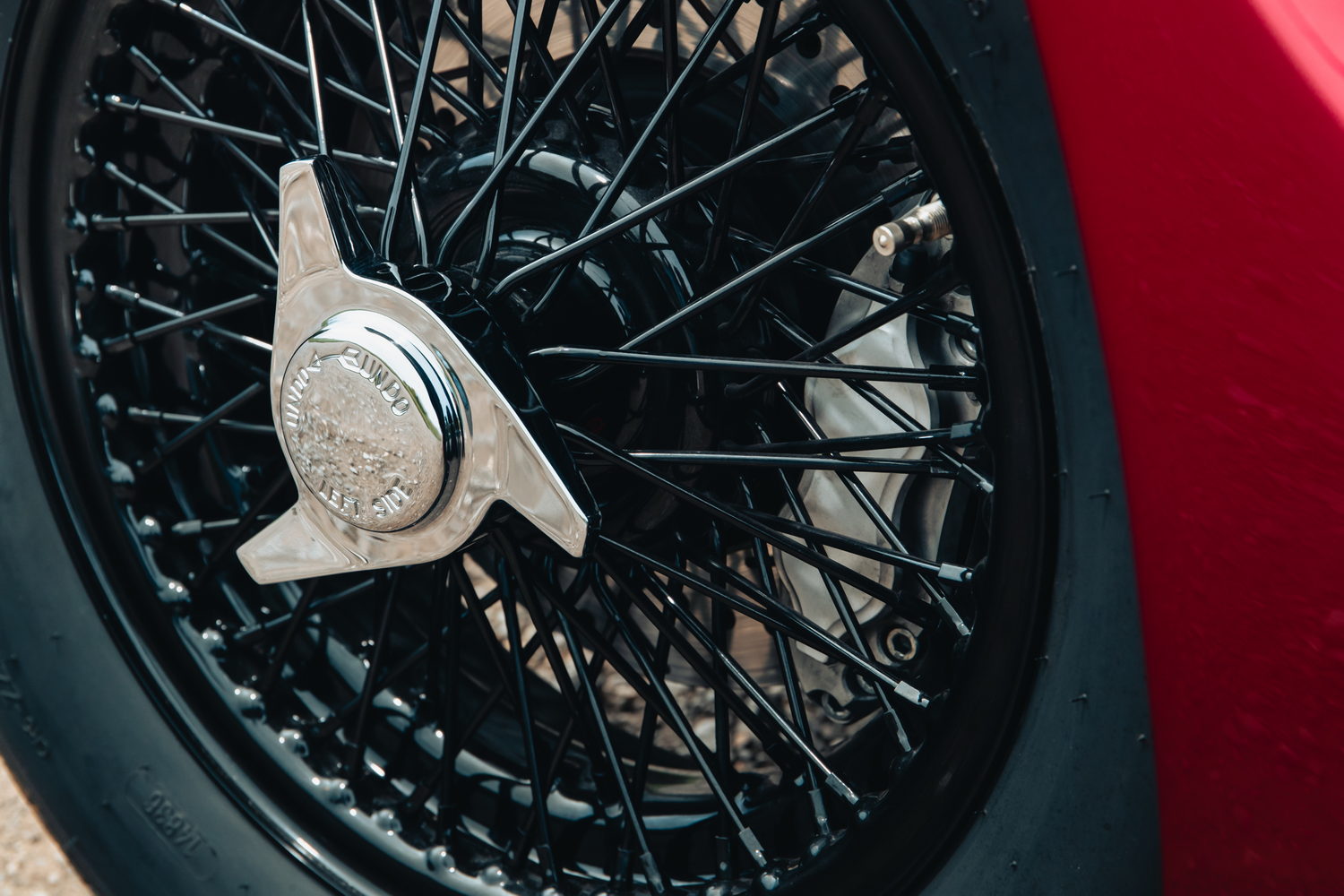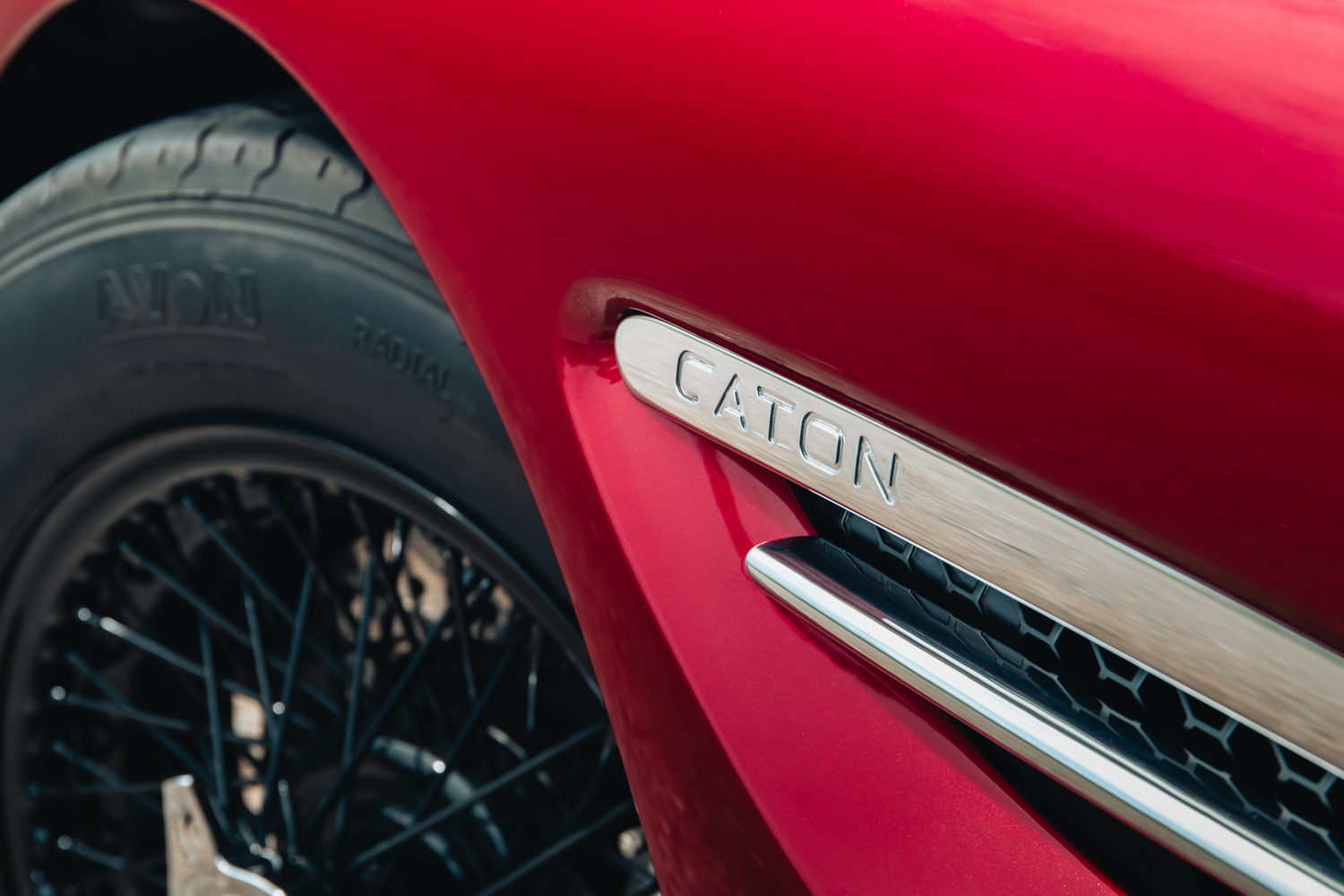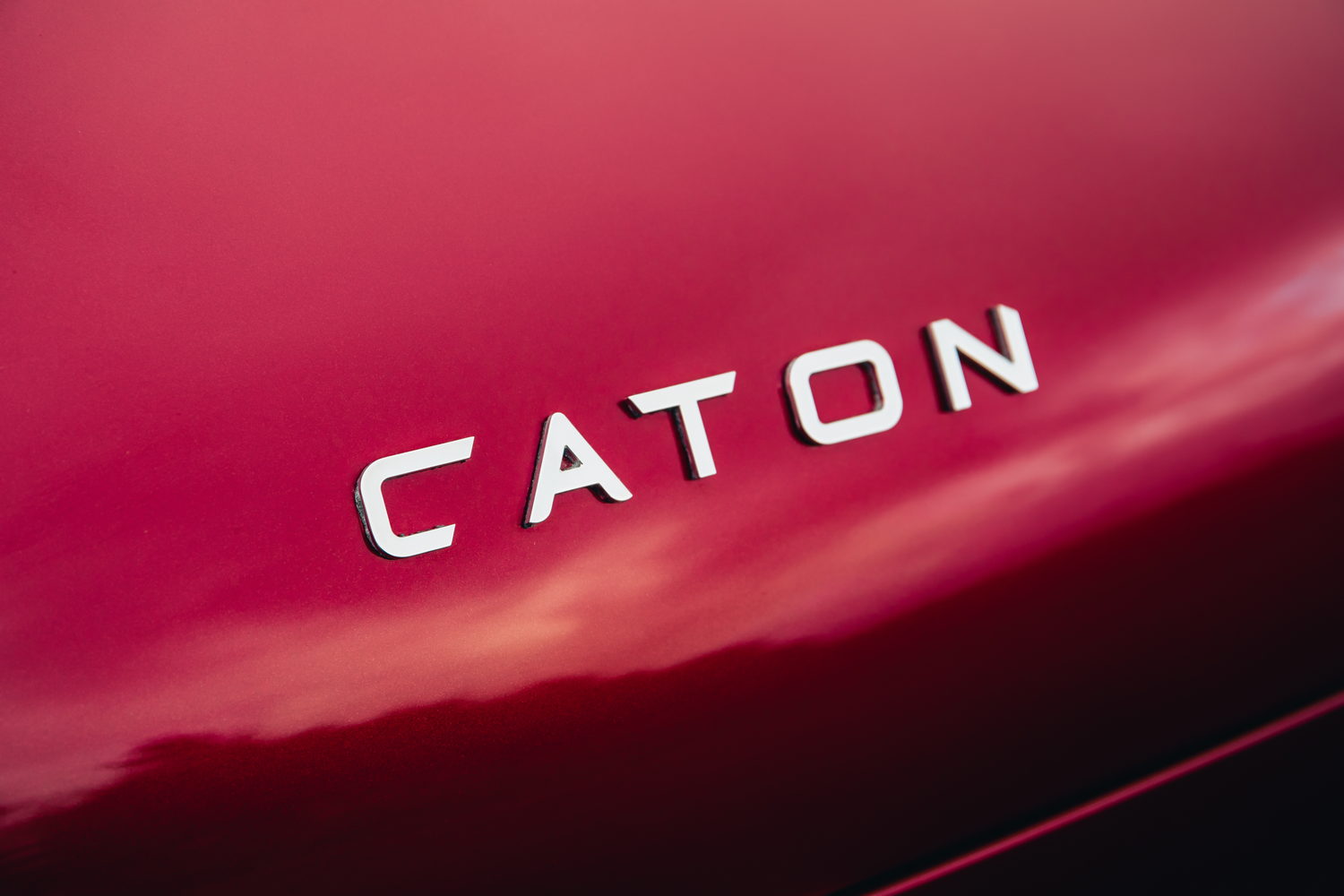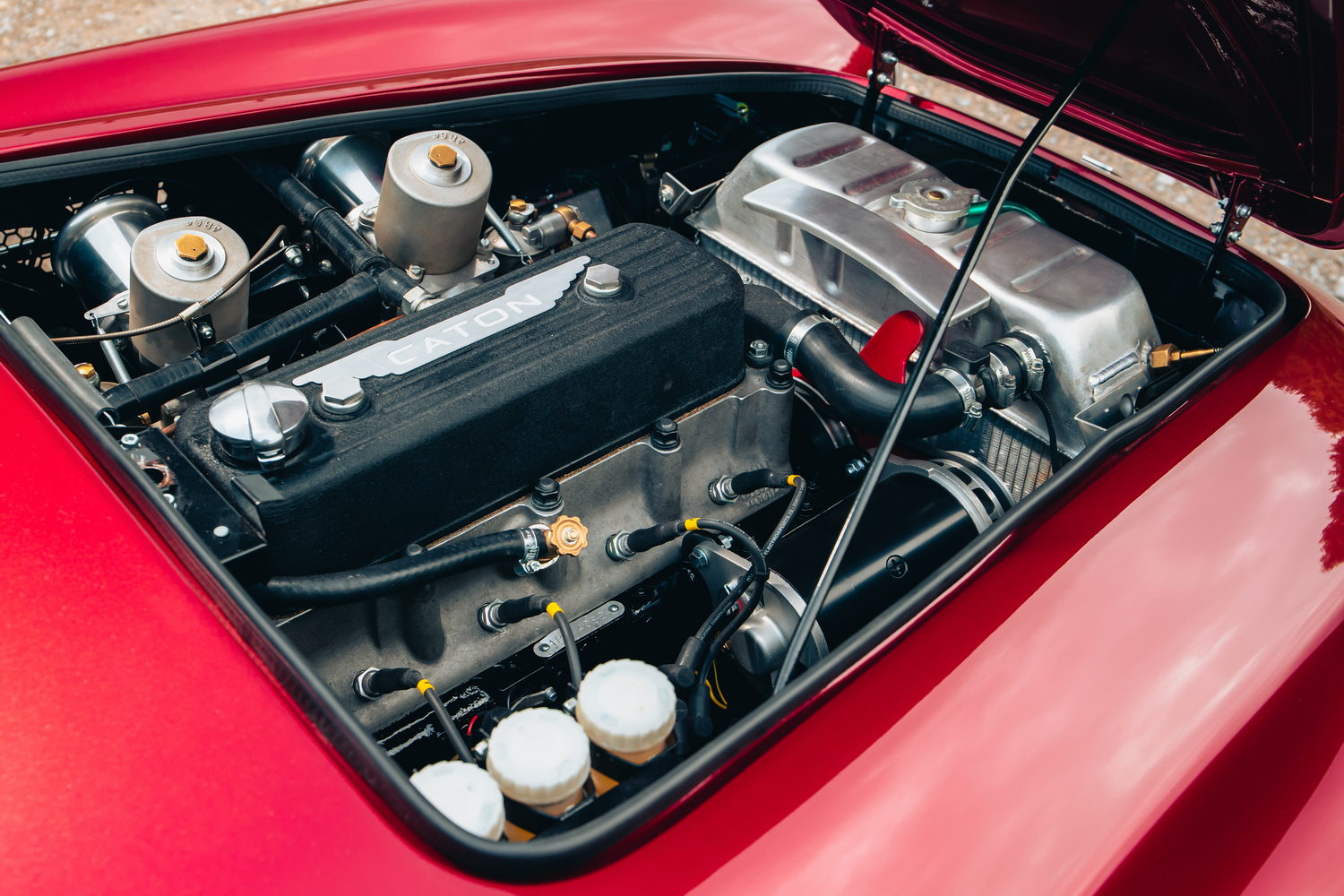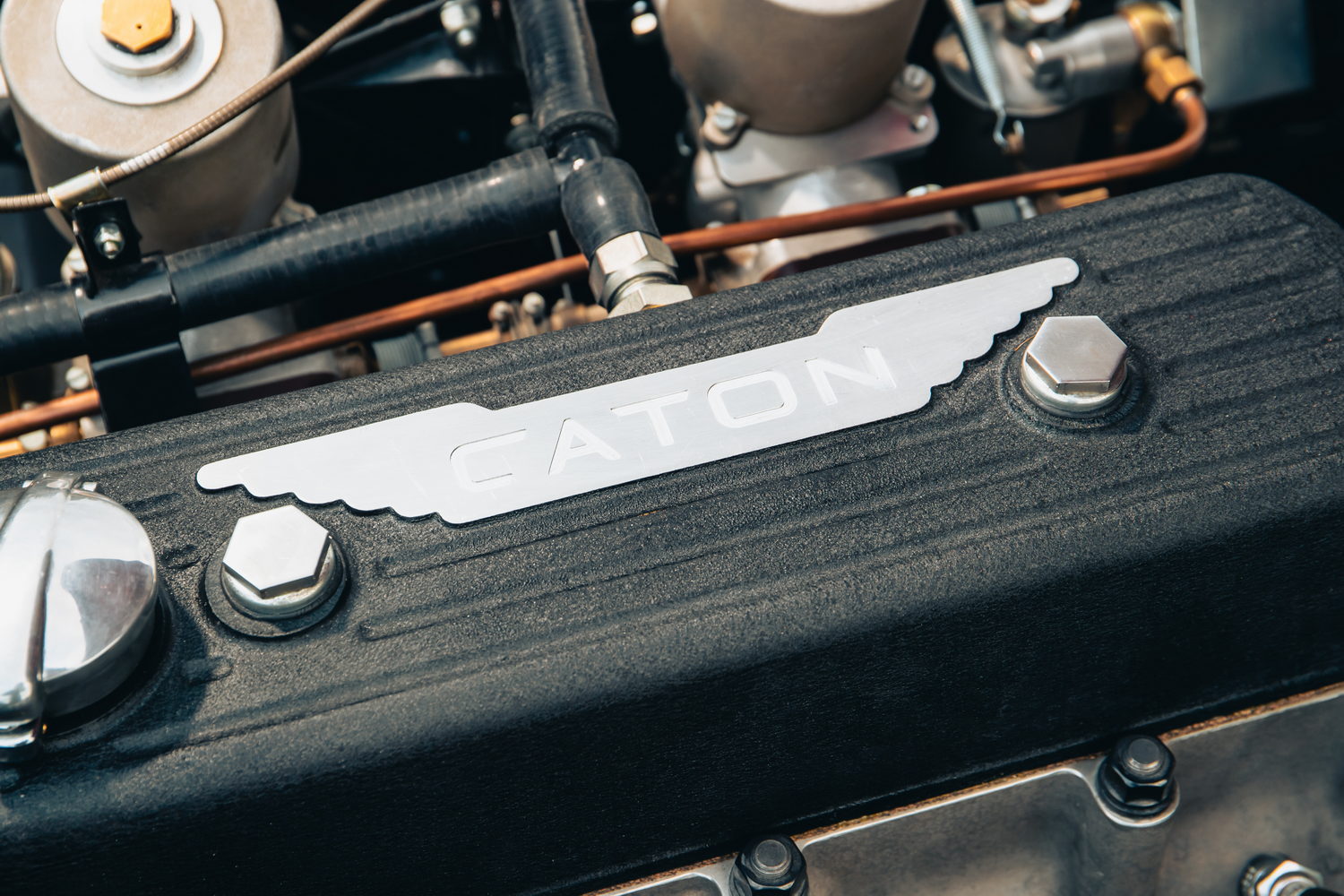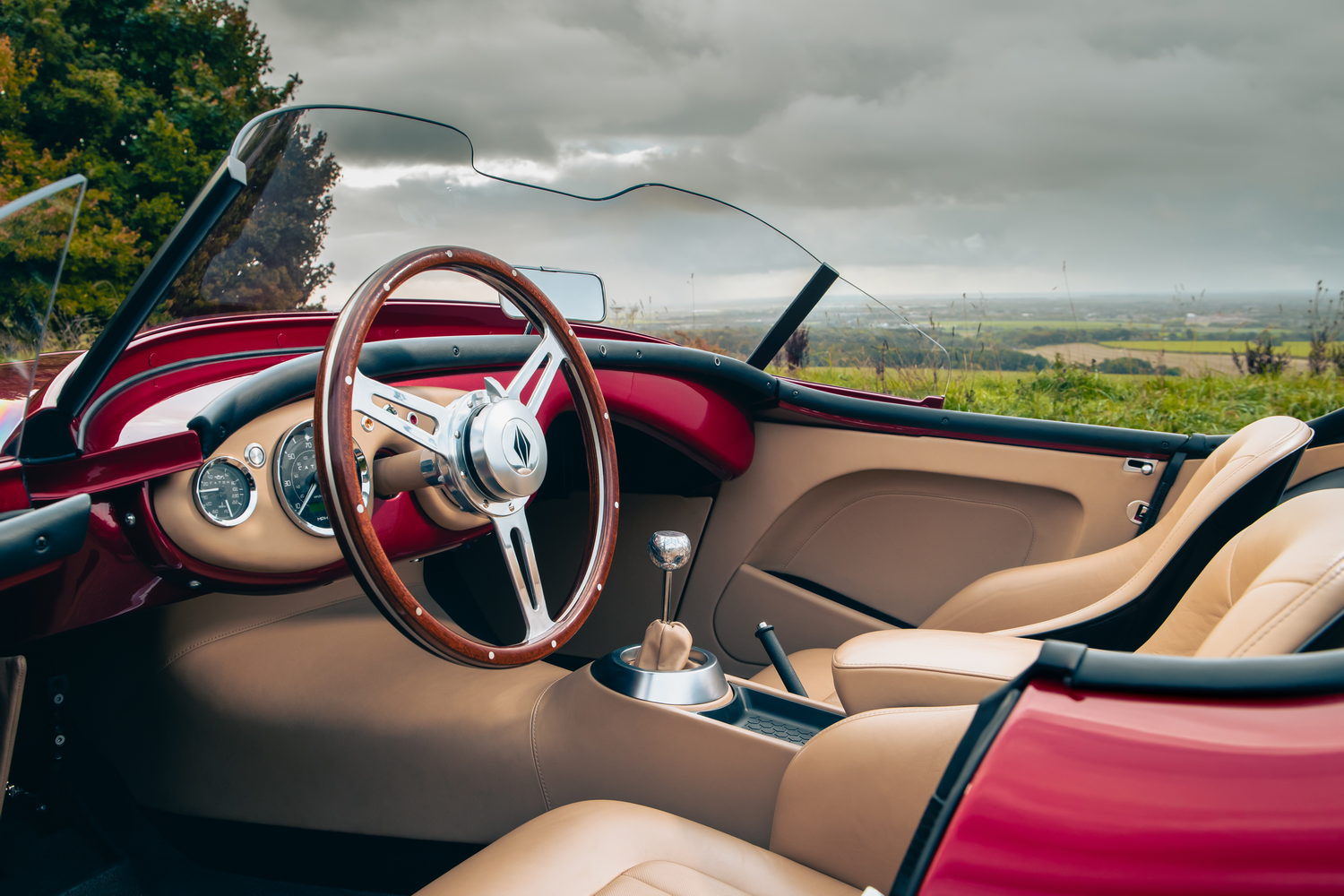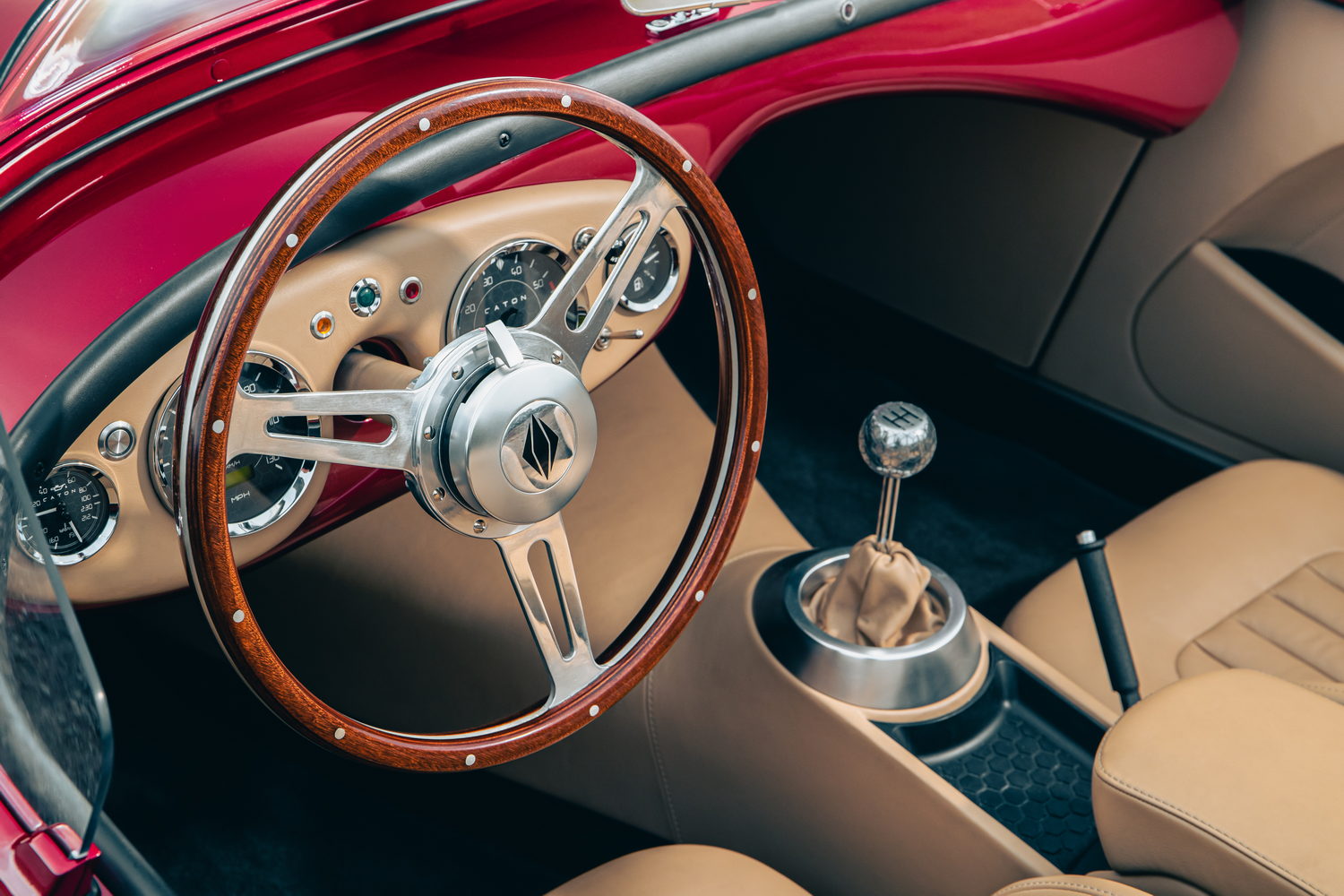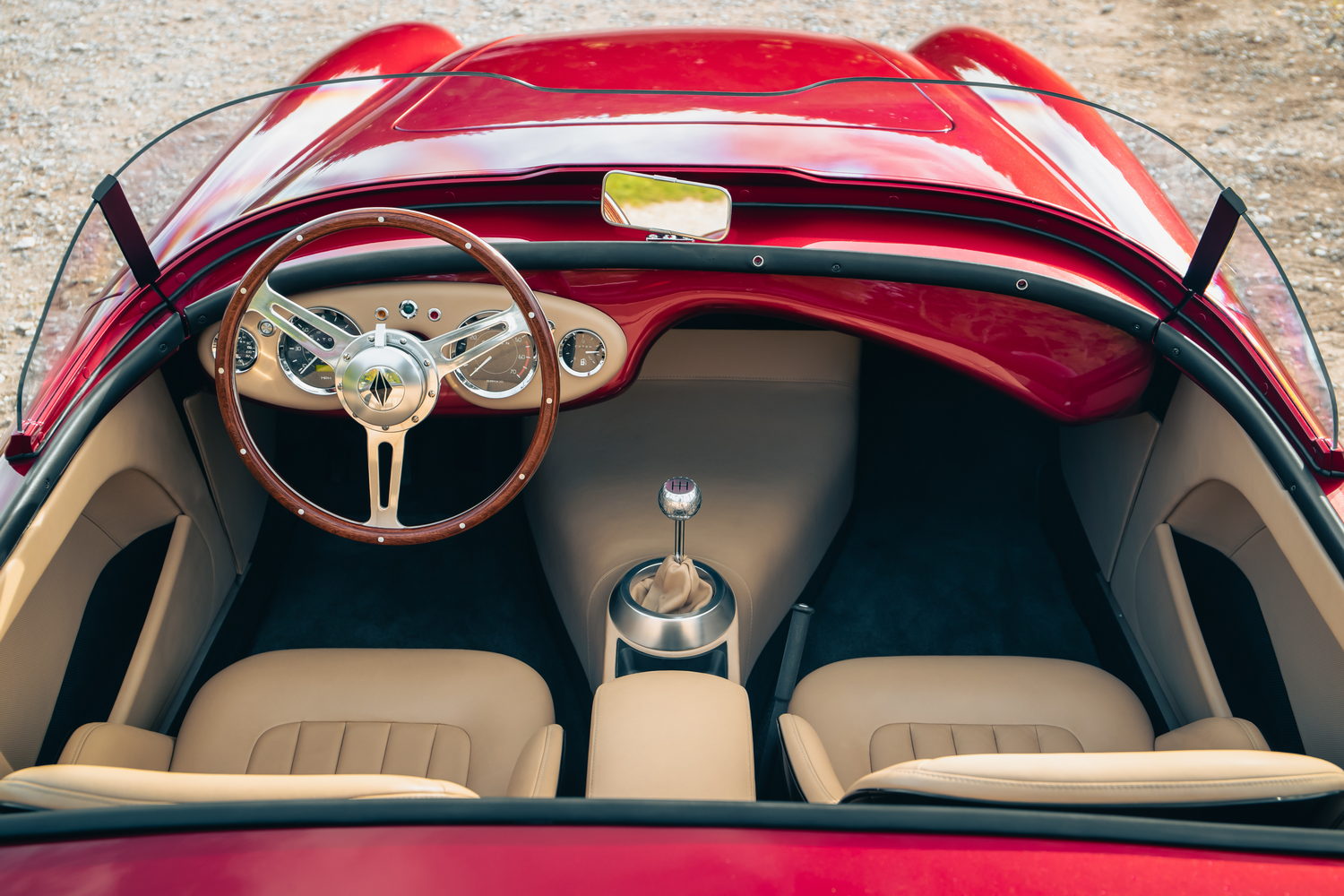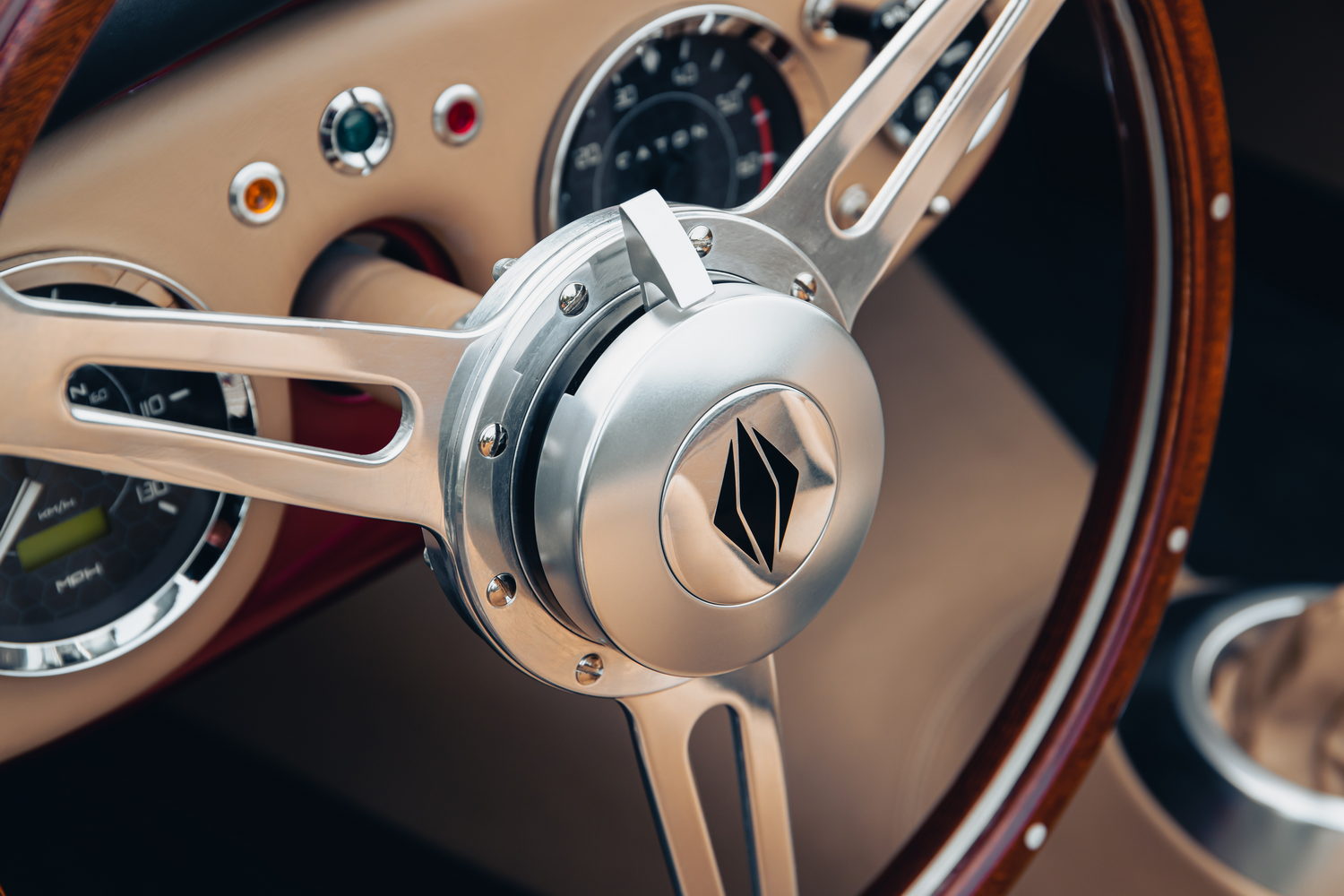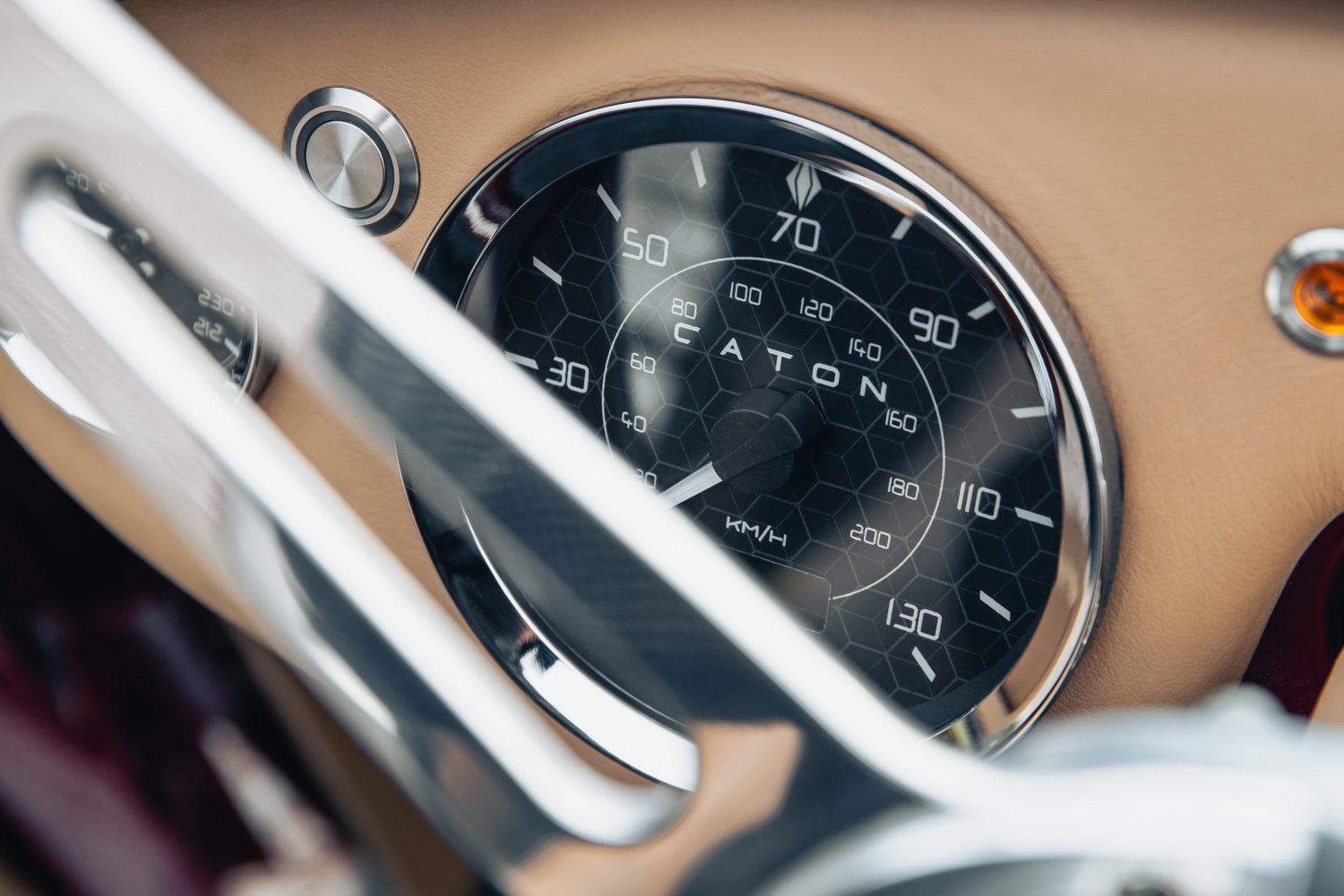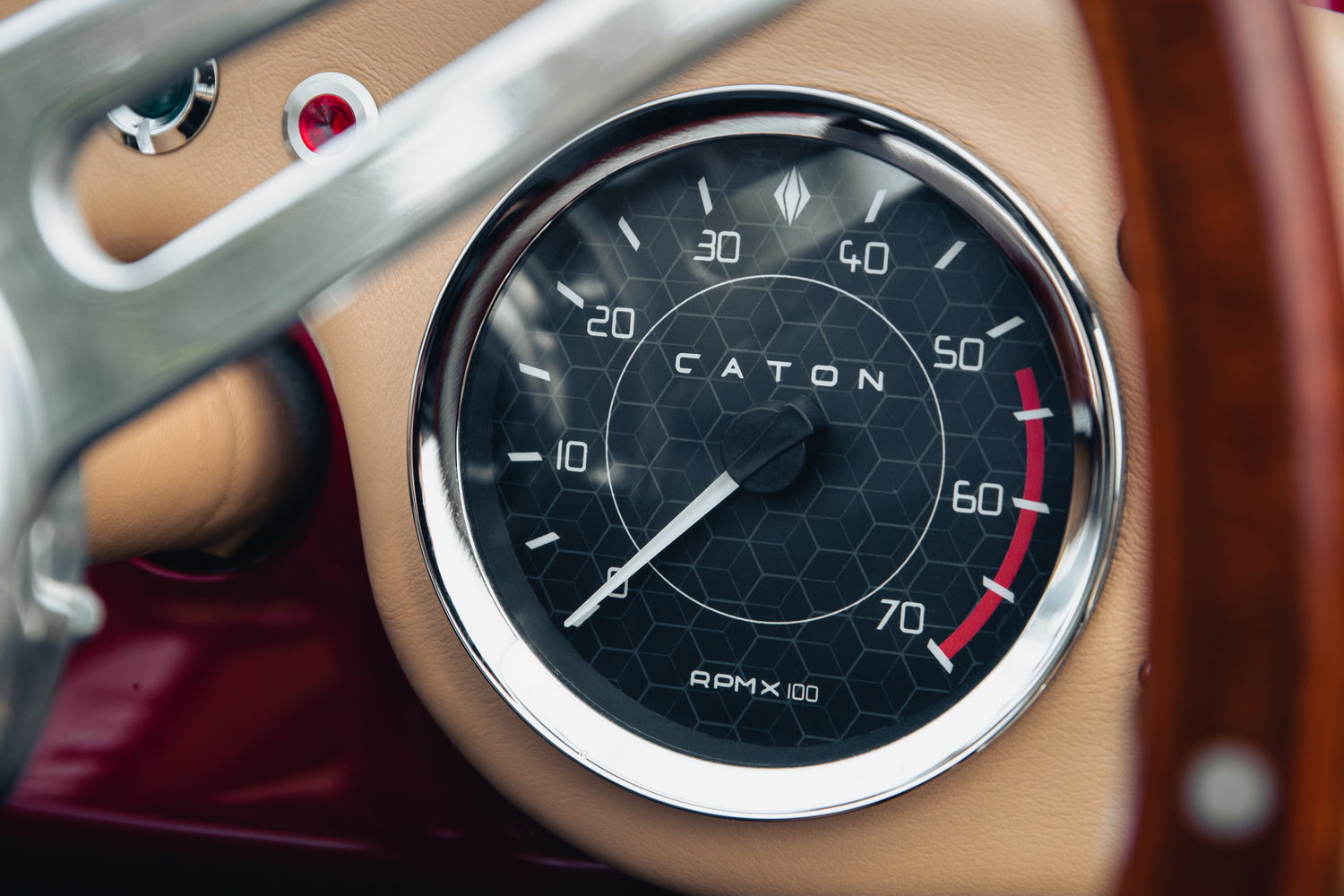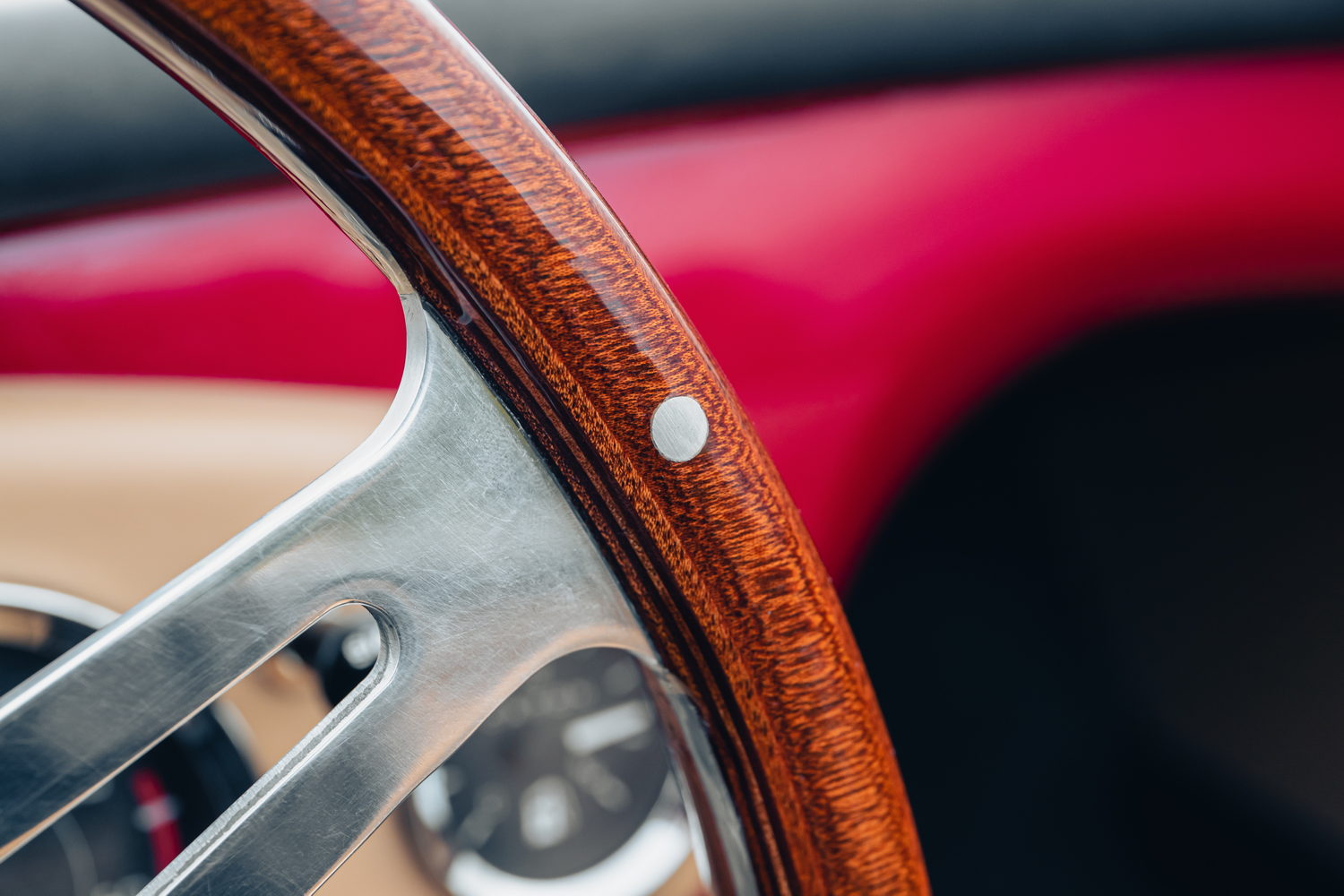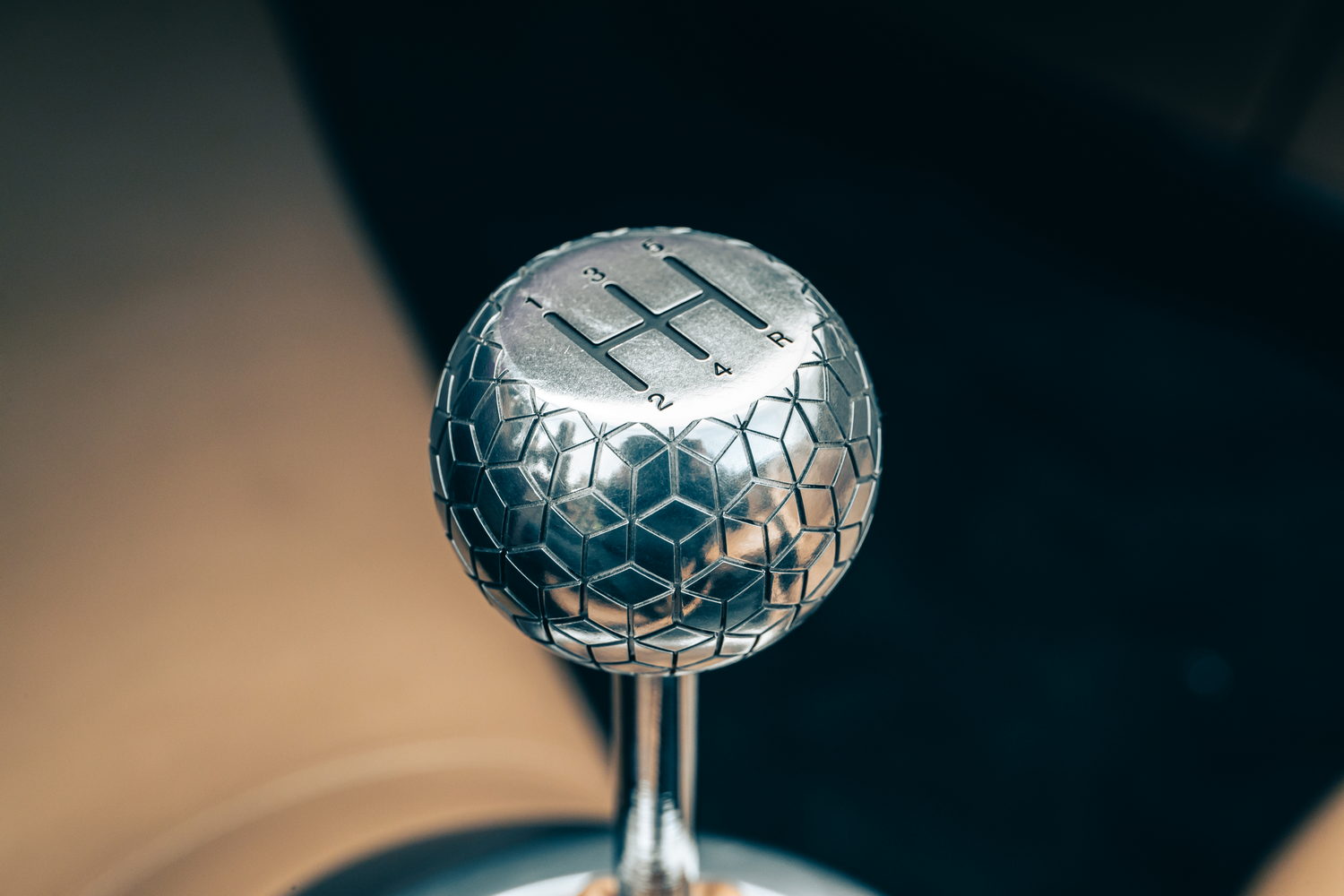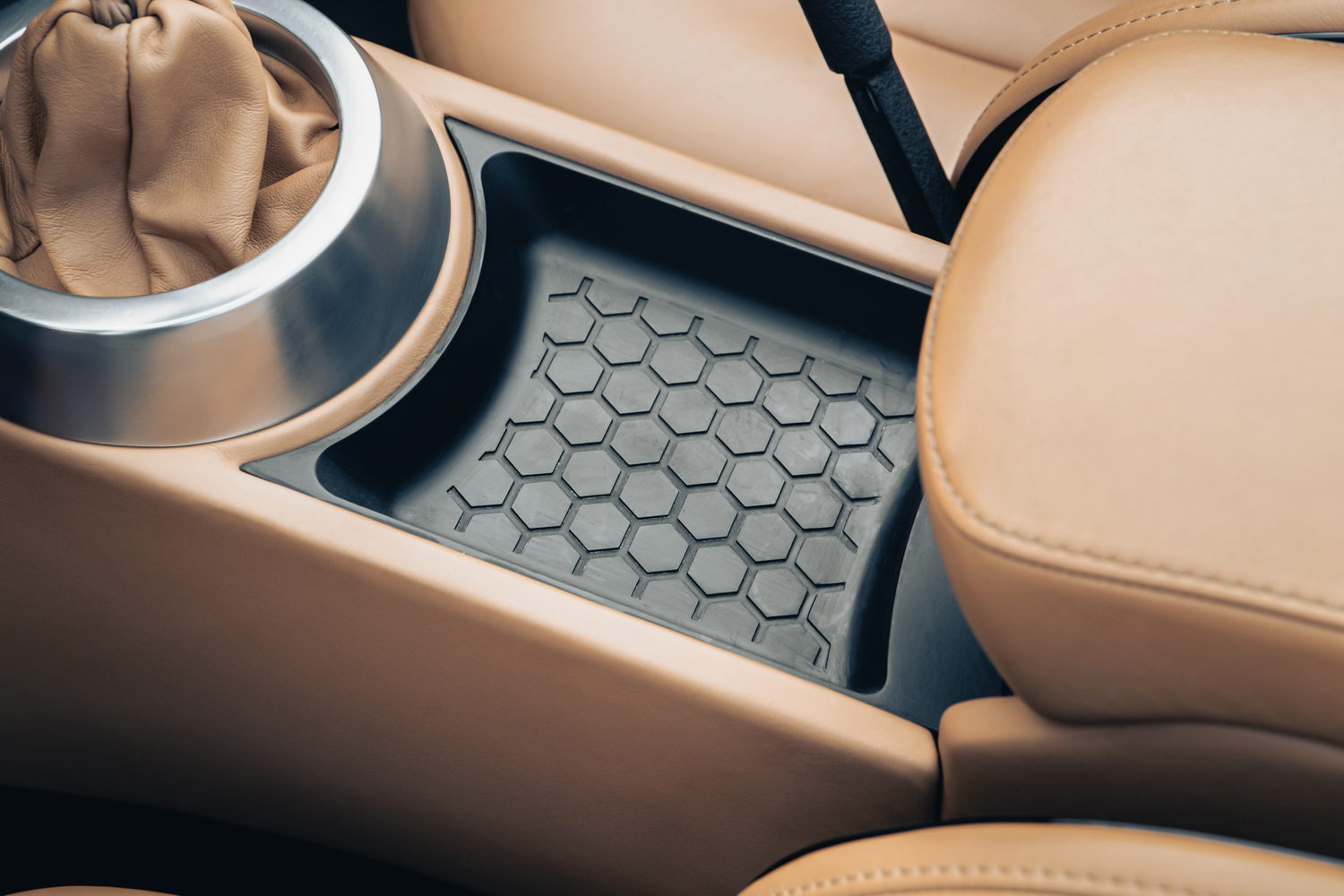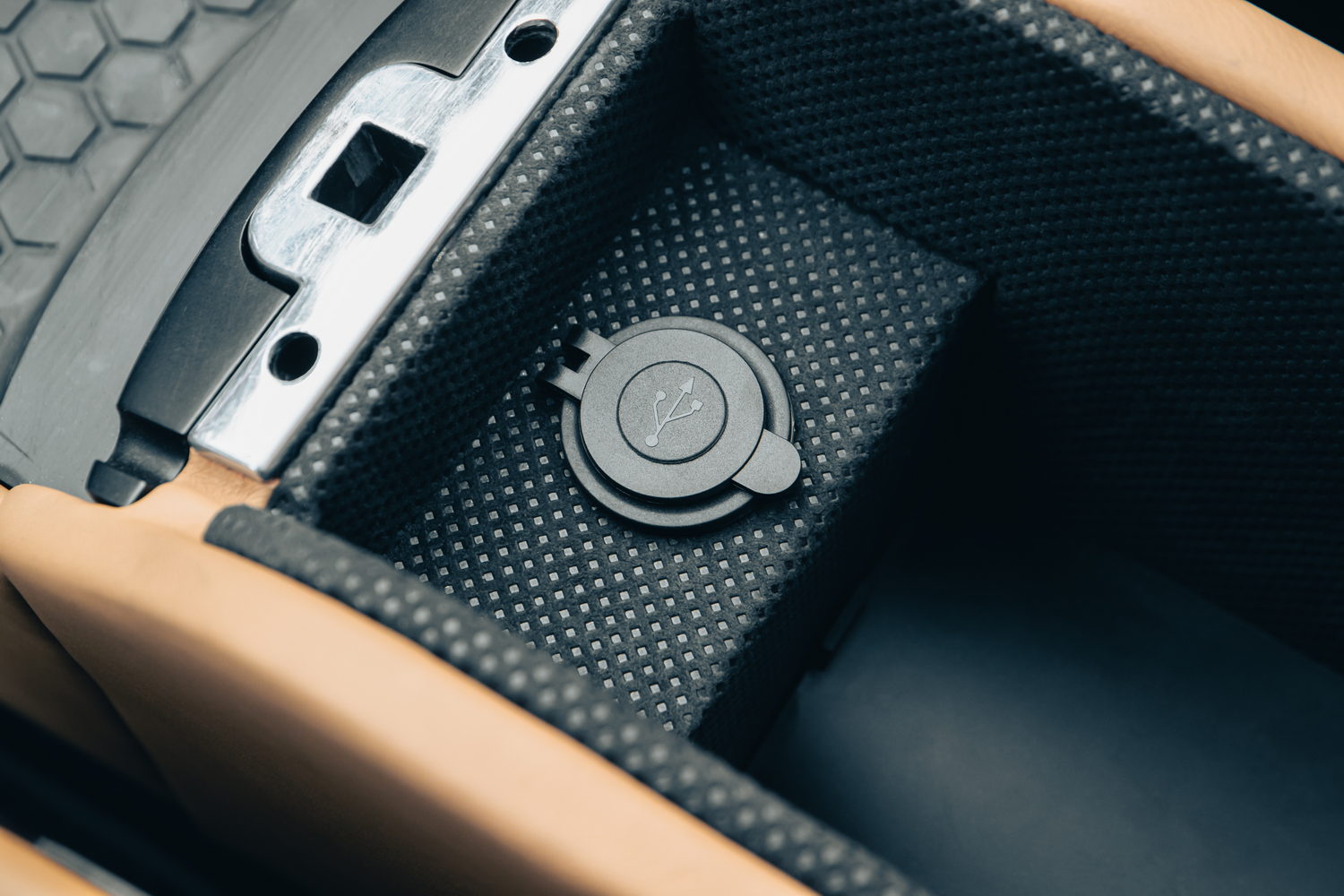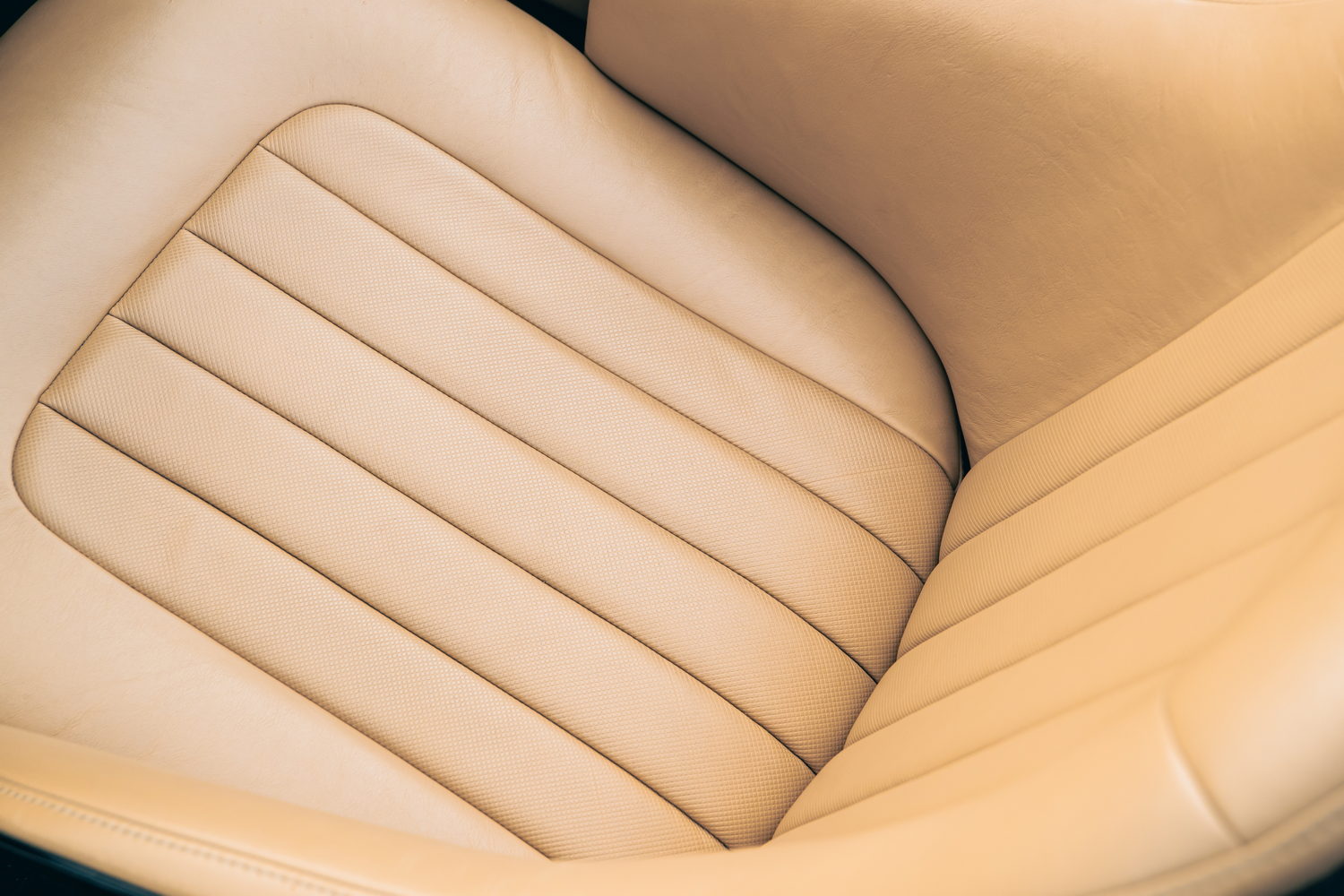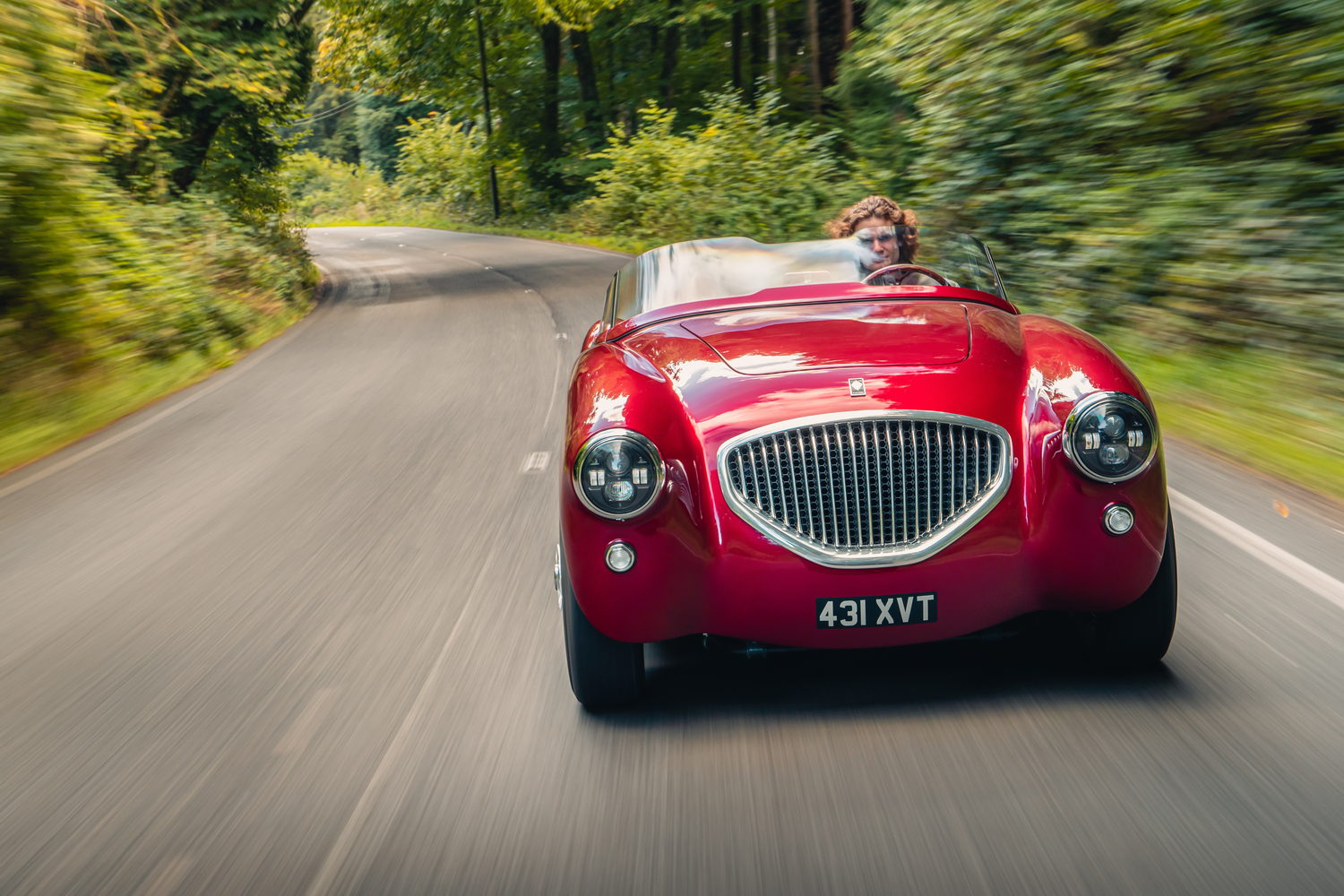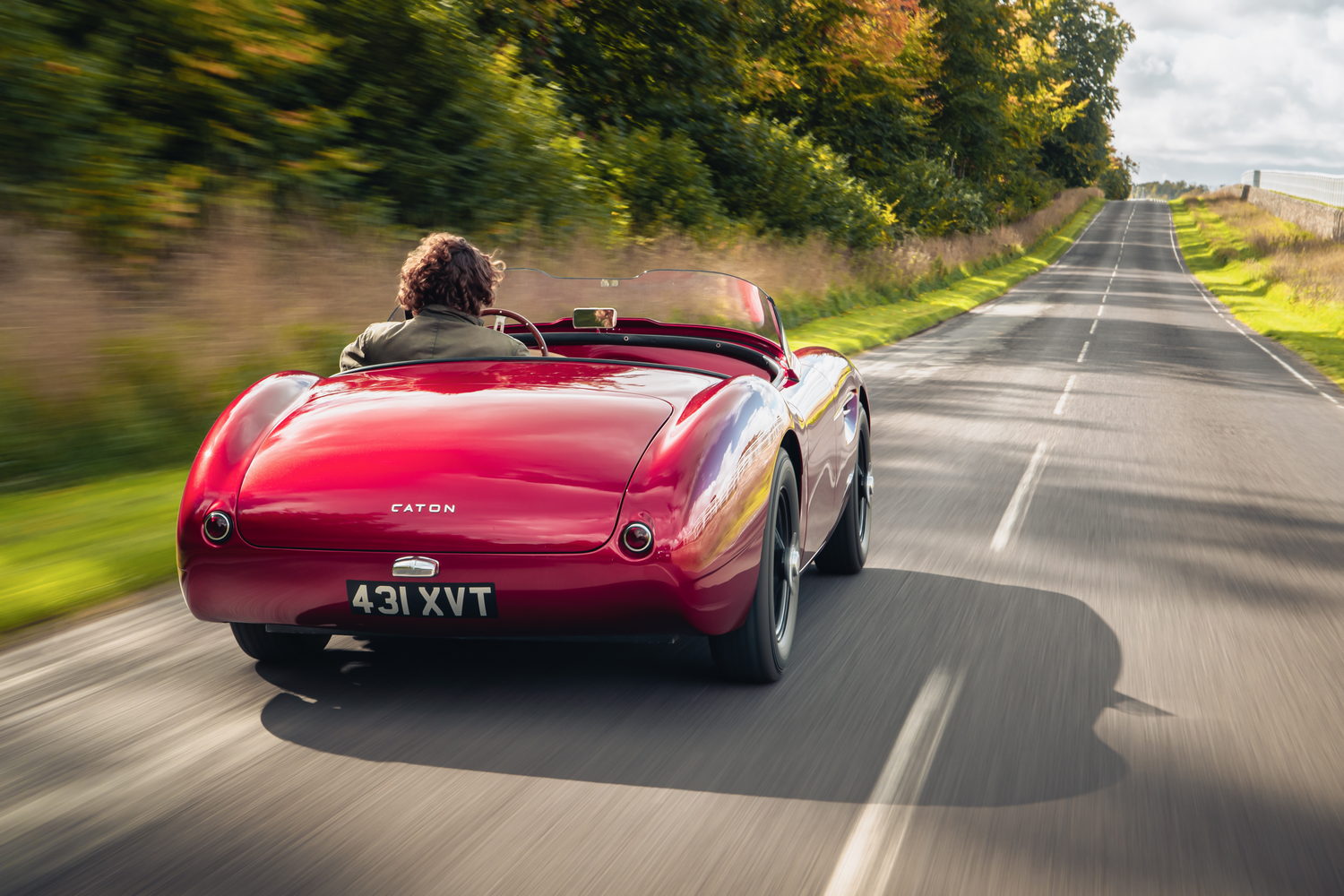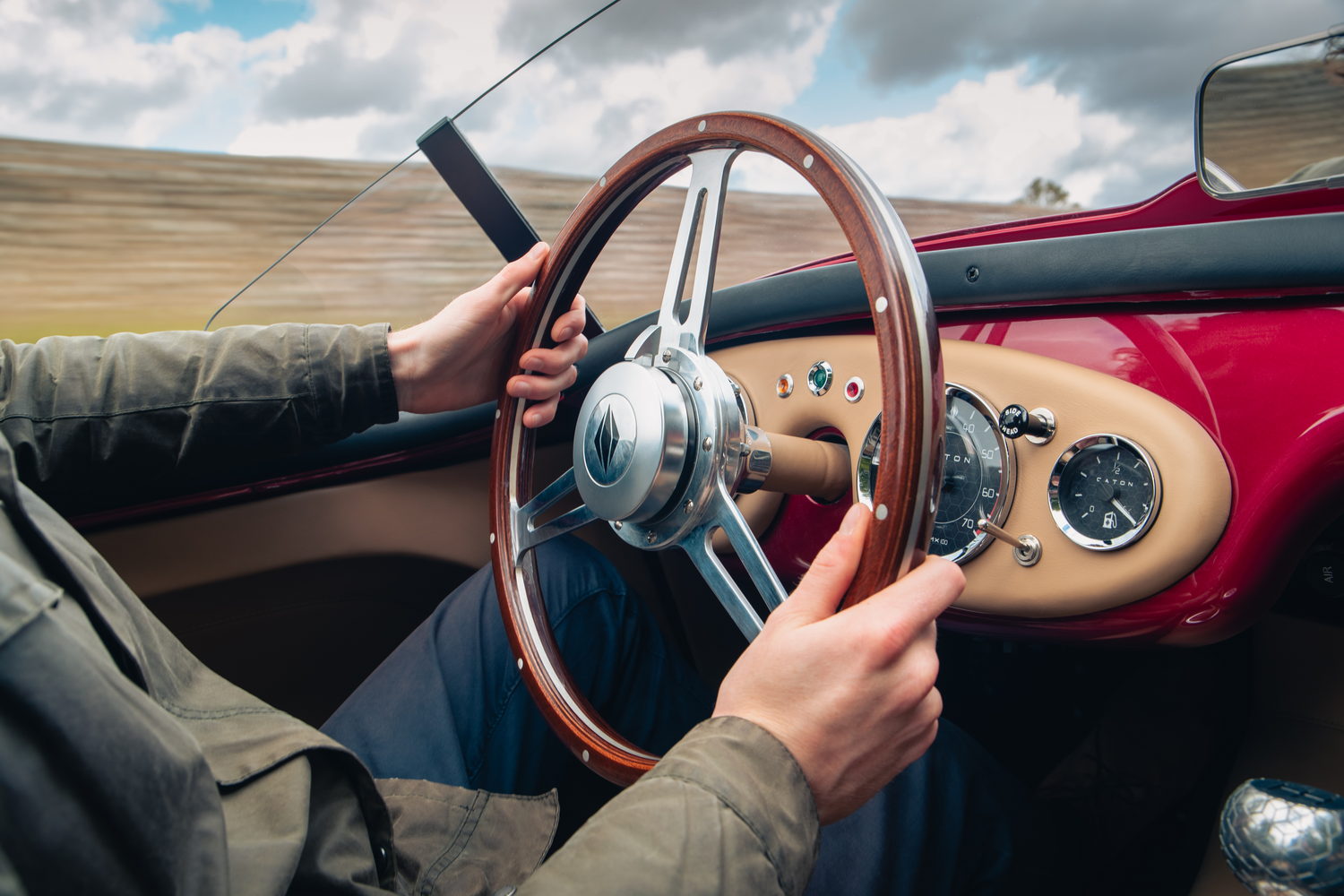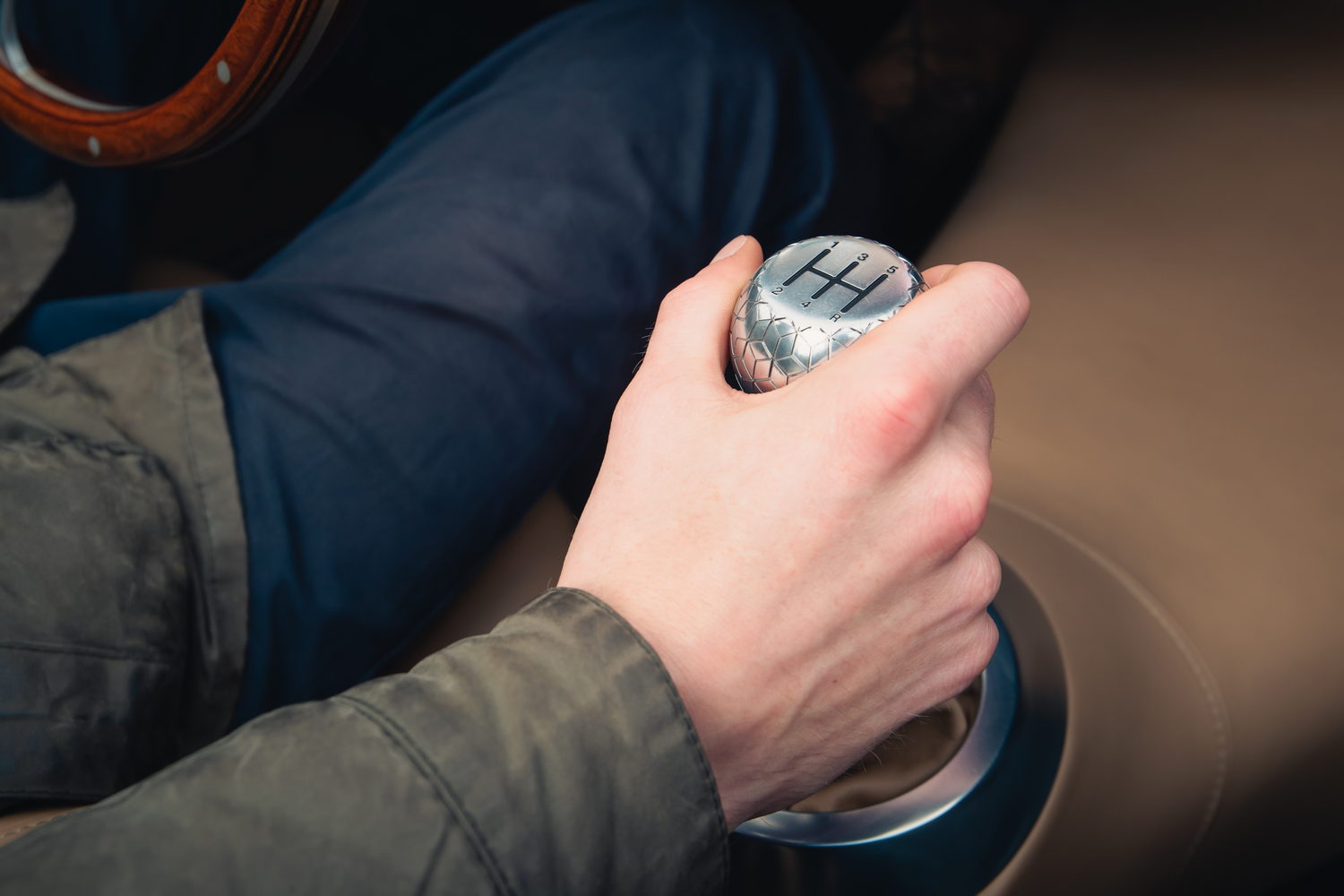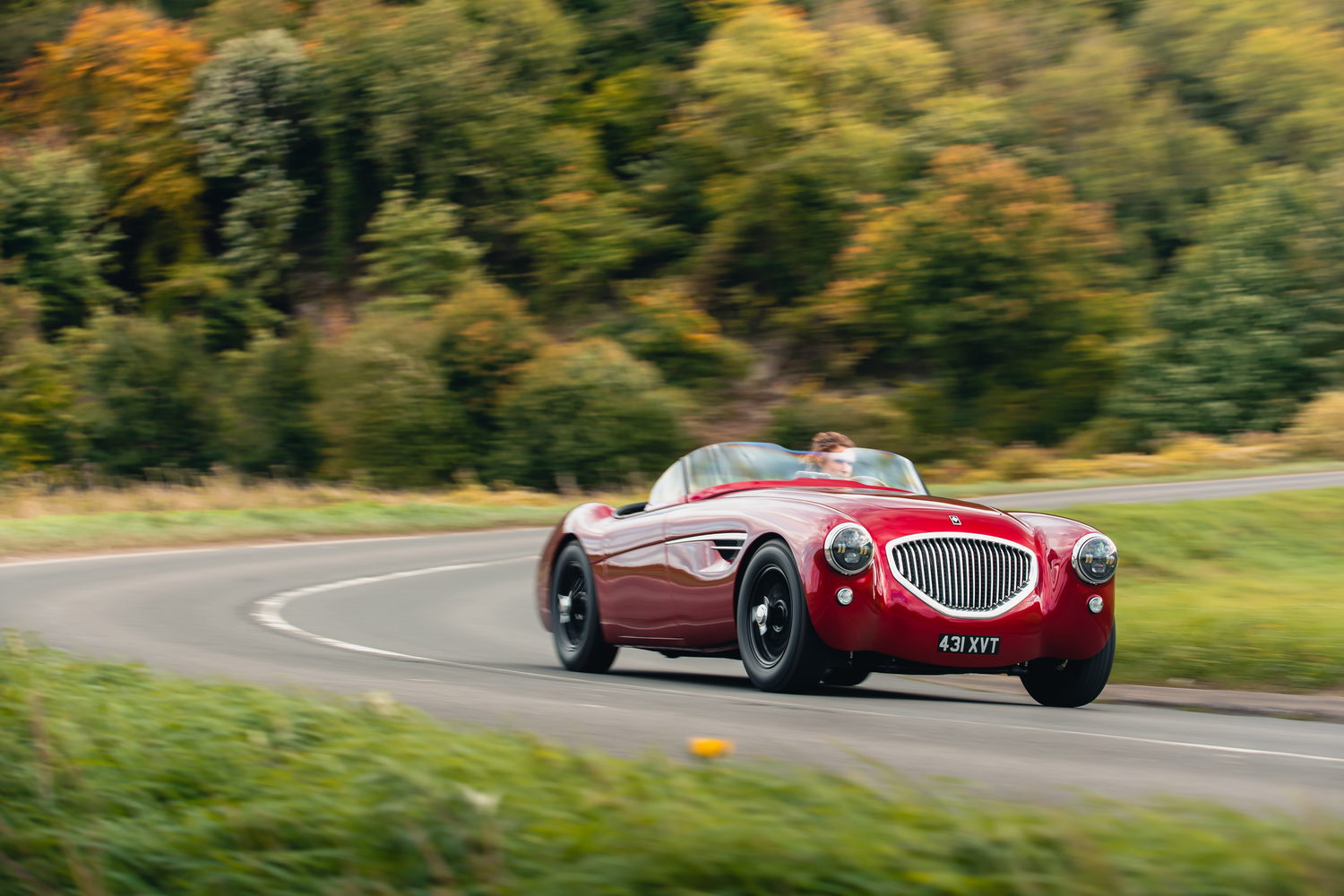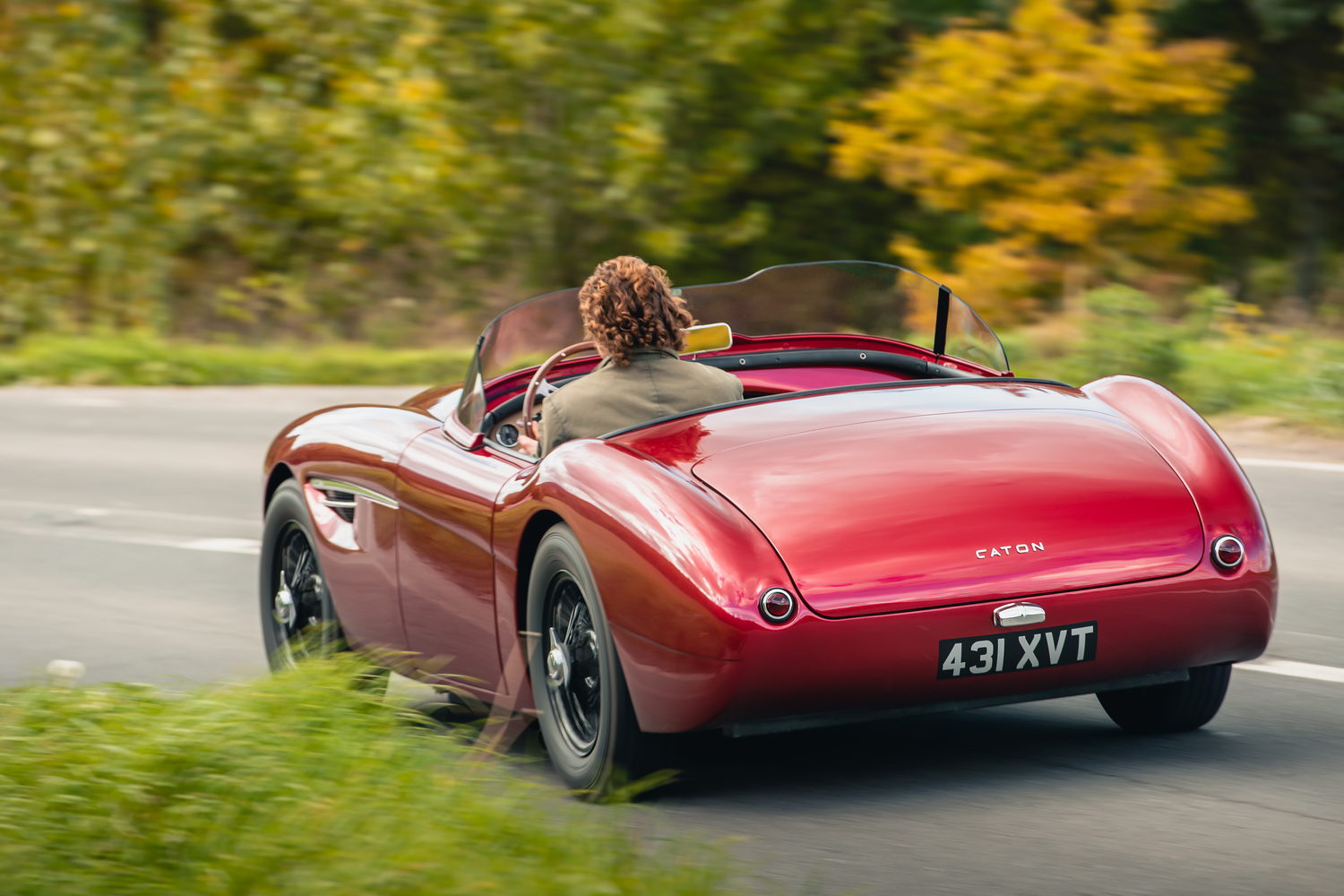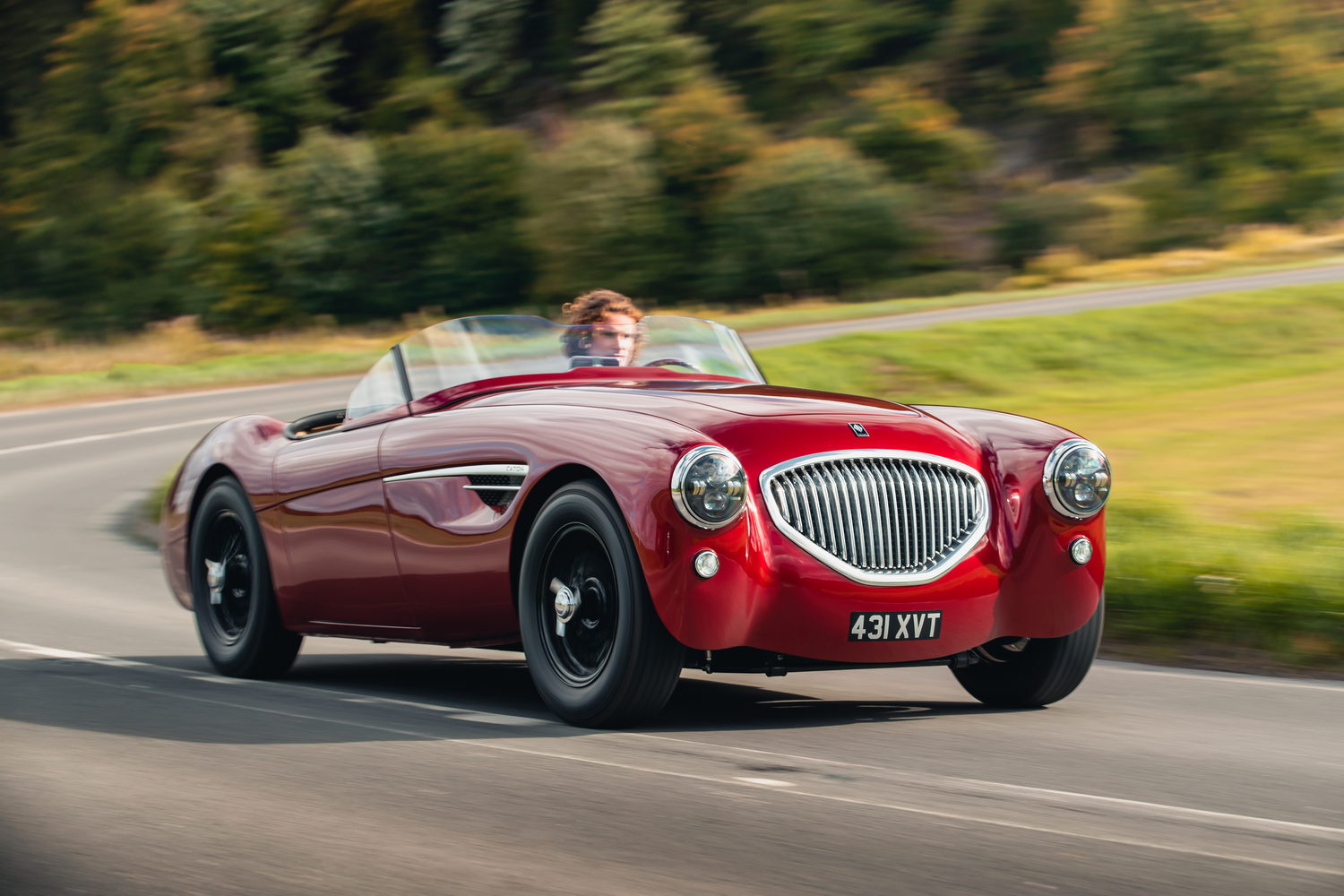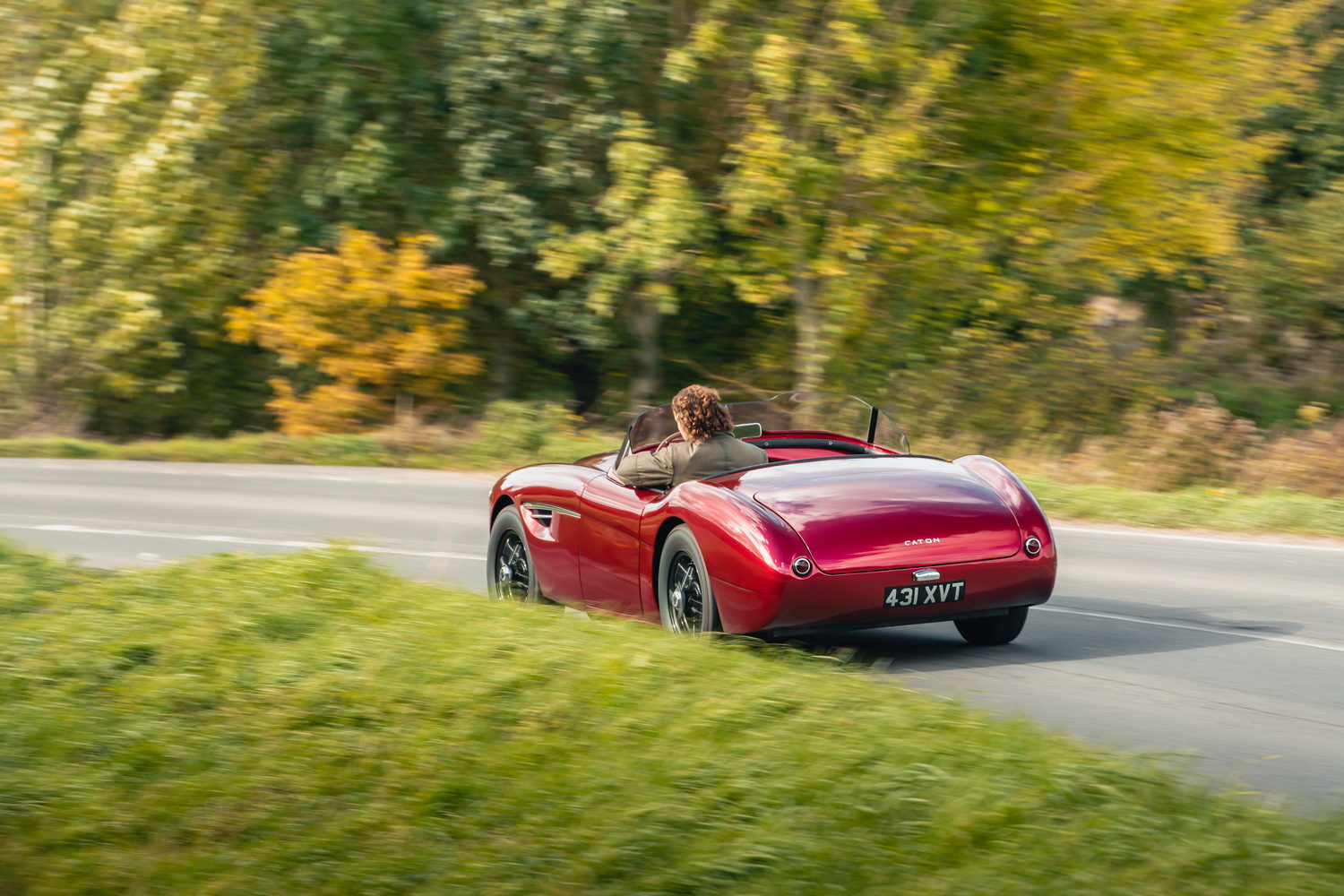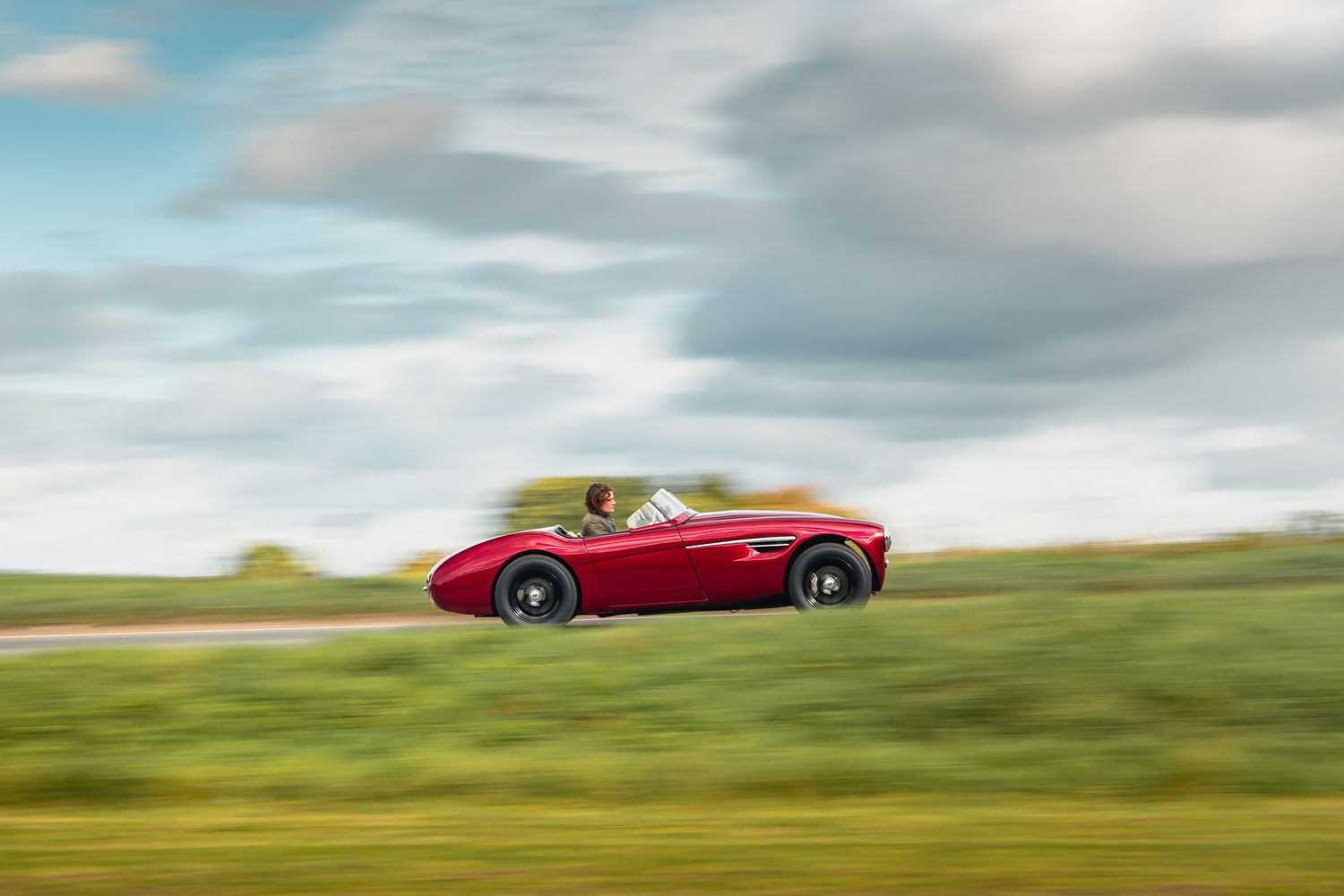It has taken a while for us to bring you this drive of the Healey by Caton. Although it's a lightly modernised Healey, with proper brakes, LED headlights and cleaner lines, it still reverted to type and our test drive failed to proceed not once, but four times. Finally, having first set eyes on the car in June, we found a gap in both the weather and reliability issues to put a development car to the test and find out whether it can possibly be worth its huge asking price of more than €500,000.
In the metal
We're accustomed to so-called 'restomodders' taking classic cars and fitting modern technology to make them more reliable, faster or more user-friendly. Preferably all three. But Caton - a brand owned by British engineering firm Envisage - has taken a slightly different approach. Instead of retaining the old-school bodywork, Caton has set about cleaning it up and modernising it, while maintaining the same basic Healey shape.
The company started off by 3D scanning the car, then using the tech to strip back the design. That meant using fewer panels, closing some of the gaps and even swapping the external hinges for more modern internal ones. And some of the original Healey 100/4 donor car's design features were simply wiped away. As were the roof and the windscreen, the latter replaced with a stunning aero screen.
Caton also swapped the original headlights, which may as well have been candles, for more modern LEDs that actually illuminate the road ahead, although we can't imagine many customers driving the car in the dark. Maybe at dusk, but the 25 Catons that will be built are unlikely to venture out either after the sun has properly set or in the middle of a rainstorm.
Anyway, it's much better to take the car out in the daylight, when other people can see it in all its glory. It's a beautiful piece of engineering and, for all the car's faults (more on those later), we think it has managed to look better than the original without taking away from the 100/4's spirit.
It has also made the original car more practical, after a fashion. By removing the roof (who drives a classic in the rain anyway?) Caton has managed to free up more space in the cabin, which means people measuring more than 180cm, like your humble correspondent, can squeeze themselves inside. The transmission tunnel is narrower, too, and that has freed up some extra cabin space, allowing two people to comfortably sit side-by-side.
Naturally, it still has flaws. There's no central locking (there isn't even a key), and that means you really need a garage in which to store it. Or indeed park it for longer than a few minutes. You also have to open the boot to access the fuel filler cap, and starting the engine is still a faff. The steering wheel isn't adjustable, either, but the pedals and seat are, and customers will come for a fitting before delivery to check everything is in the right place for them.
More important than all that, though, is the way the Caton's interior is trimmed. The company has done a spectacular job with the materials and the design, creating a minimalist cabin that feels every bit as premium as a modern supercar, but stays true to the classic design of the original. And so what if there are no seatbelts or head restraints?
The classic theme continues under the skin, where Caton has kept a four-cylinder, naturally aspirated petrol engine. Admittedly, it's been bored out from 2.5 to 3.0 litres, but it still goes without fuel injection or any mod cons. There are disk brakes hiding behind the wire wheels, but there's no anti-lock brakes or traction control, and there's very little to help you out should anything go wrong. It's still a 1950s car at heart.
Driving it
As we've already mentioned, the road to driving the Healey by Caton was not smooth. First, the car had a clutch bearing issue, then that gorgeous aero screen broke and then there was an electrical issue - albeit one partly caused by human error on the part of a Caton representative. Oh, and there was an issue with the passenger-side door latch. Then, when we finally could get behind the wheel, we stopped for some photographs and found copious amounts of petrol pouring from the carburettors. A bolt had come loose, so it was a simple fix, but it was still far from ideal.
Although our test car was a development vehicle and certain parts of the design were not yet finalised, it felt as though Caton was unleashing the car on the press well before it's ready. The engineers may, and almost certainly will, make some tweaks over the coming months, but the attitude is set to remain as is. Whereas so many restomods aim to add modern engineering and usability to a vehicle with classic styling, the Caton still feels every inch the classic car.
When it works, that's fine. It's more than fine, in fact. Rasping through the countryside on a fine day, the Healey by Caton looks and feels exactly like an old-school Healey, and that's how onlookers see it, too. While mooching through a town centre in a modern Ferrari is likely to attract attention of an unwelcome sort, driving the vastly more expensive Healey simply earns you an avalanche of raised thumbs. Obviously, jealousy remains an issue here and there, but most politicians would kill for the sort of approval ratings a car like this can provide.
The trade-off for all this is a driving experience that doesn't exactly scream modernity. For more than half a million euros, you might expect the Caton to be a driver's dream and, while it definitely counts as fun, it's no Porsche 911. For starters, the 3.0-litre engine only produces about 190hp, and the clutch feels very heavy. The five-speed manual gearbox is new and an improvement on the original, but it's still a bit vague and certainly nowhere near as good as that of a modern Ford Fiesta.
Similarly, the steering has quite a bit of play in it around the dead-ahead, but it rapidly becomes very eager and responsive when you increase the lock - even though there's no power steering and the thin, wood-rimmed wheel is very heavy by modern standards. The handling is also quite classic, giving you the sensation that turning the wheel vigorously will twist and torture the generously side-walled tyres, and thereby creating a kind of wooliness that makes you guide the car down the road, rather than placing it with any real precision.
Still, the skinny, high-profile tyres do help the suspension soak up some of the bumps, and it desperately needs that help. The suspension set-up is essentially a period design, complete with leaf springs at the rear, so the ride is naturally firm and jiggly over broken surfaces. That said, it's far from intolerable, and there's a bit of flex in the chassis that may not be ideal from a handling point of view, but doesn't do any harm to the ride.
Of course, with no roof to keep you dry, the Caton is a fair-weather machine, and though the aero screen looks great in pictures, it doesn't do all that much to keep the wind from your visage - especially if you're generously proportioned. Glasses are certainly necessary.
What you get for your money
It won't come as a surprise to find the Healey by Caton is an expensive thing. Just 25 will be built with prices starting at £395,000 in the UK (about €460,000), and that's before you specify any kind of customisation or pay any tax. But you do get the donor car for that money.
Once you've paid to import one of these into Ireland, you're looking at a car that costs well over half a million euros, and that's hard to justify. Especially when you can have a pristine original Healey for a fraction of that money. Admittedly, it won't be as clean looking on the outside or as beautifully trimmed inside, and nor will it be as spacious, but it will have originality on its side.
Summary
When it works, the Healey by Caton is a peach. It looks great, it's enjoyable to drive and the interior is beautiful. But all that is true of a tidy original Healey, which is significantly cheaper and, unless Caton's engineers really improve things in the coming months, probably no less dependable. Don't get us wrong, the Caton is a glorious thing to potter around in, but with an asking price of around half a million euros, it's ludicrously overpriced. Especially for a restomod that's more 'resto' than 'mod'. Had Caton dropped in some more modern systems and improved the car's reliability, we might be more impressed, but it still feels very much like a classic car. And if that's the vibe you're after, why not spend half as much on a really cool, exotic and original classic?

